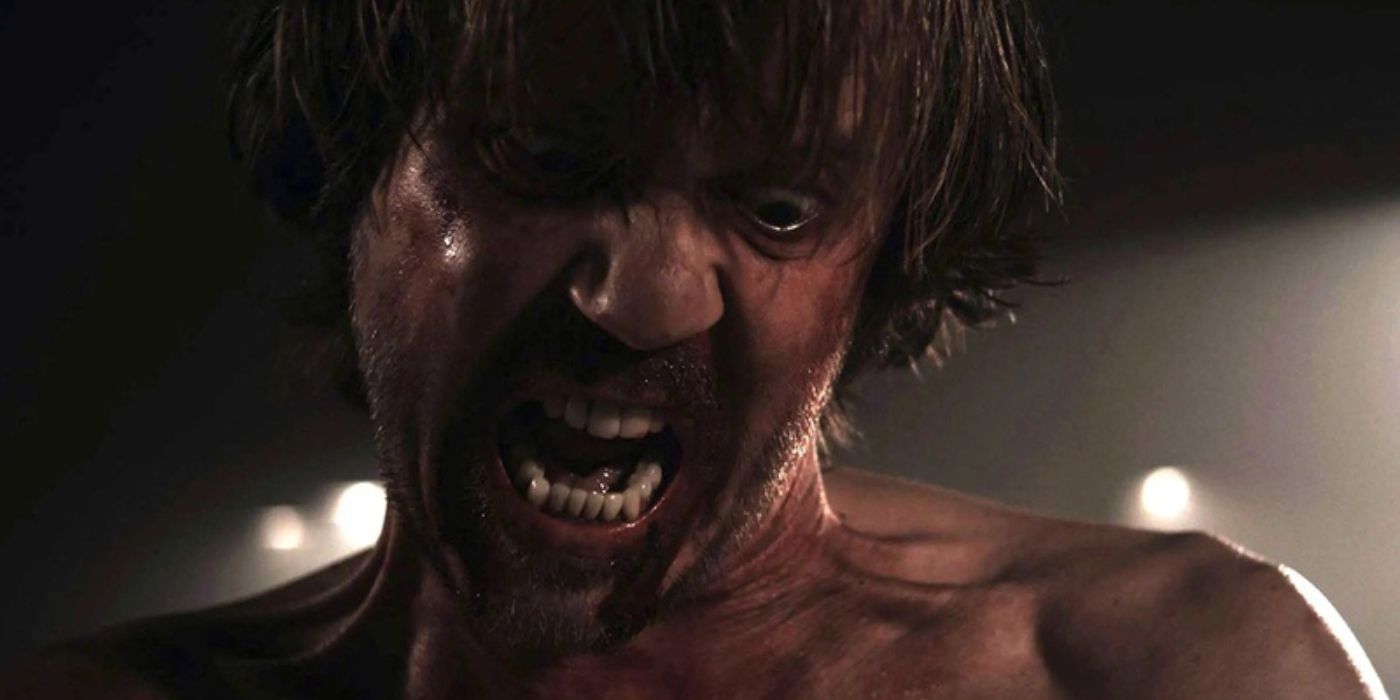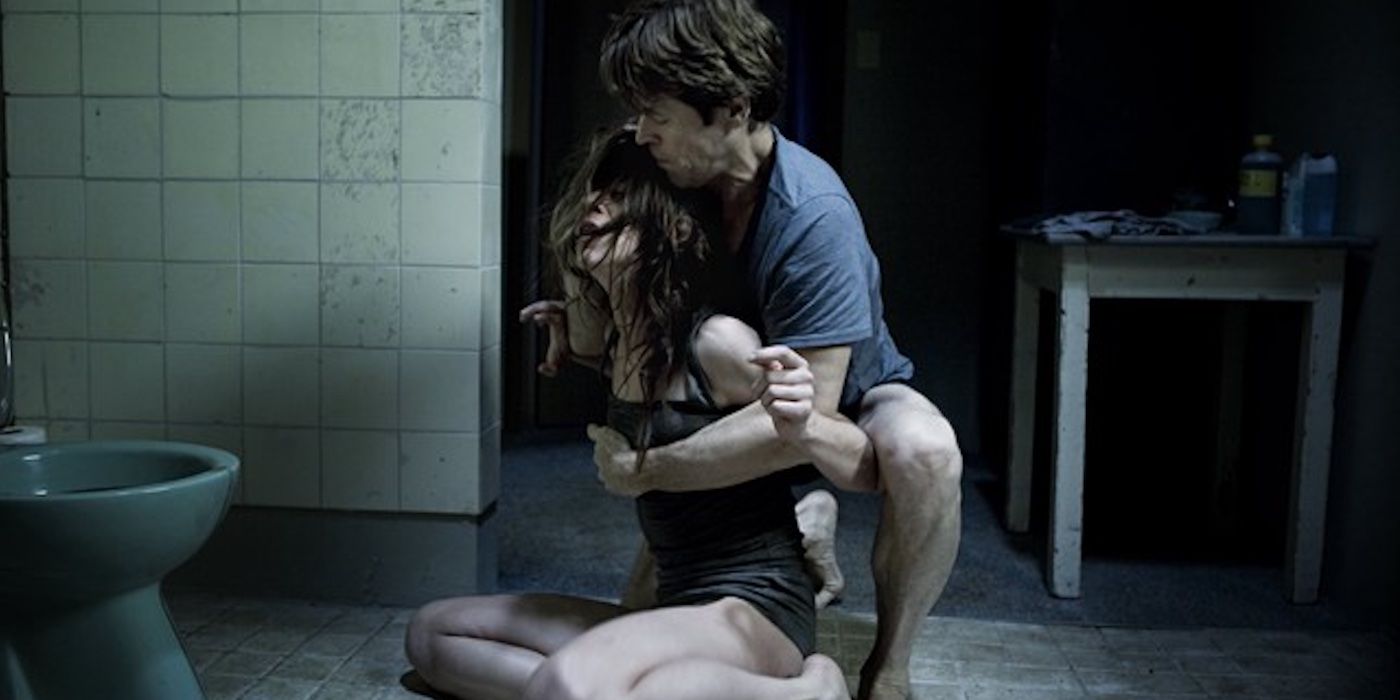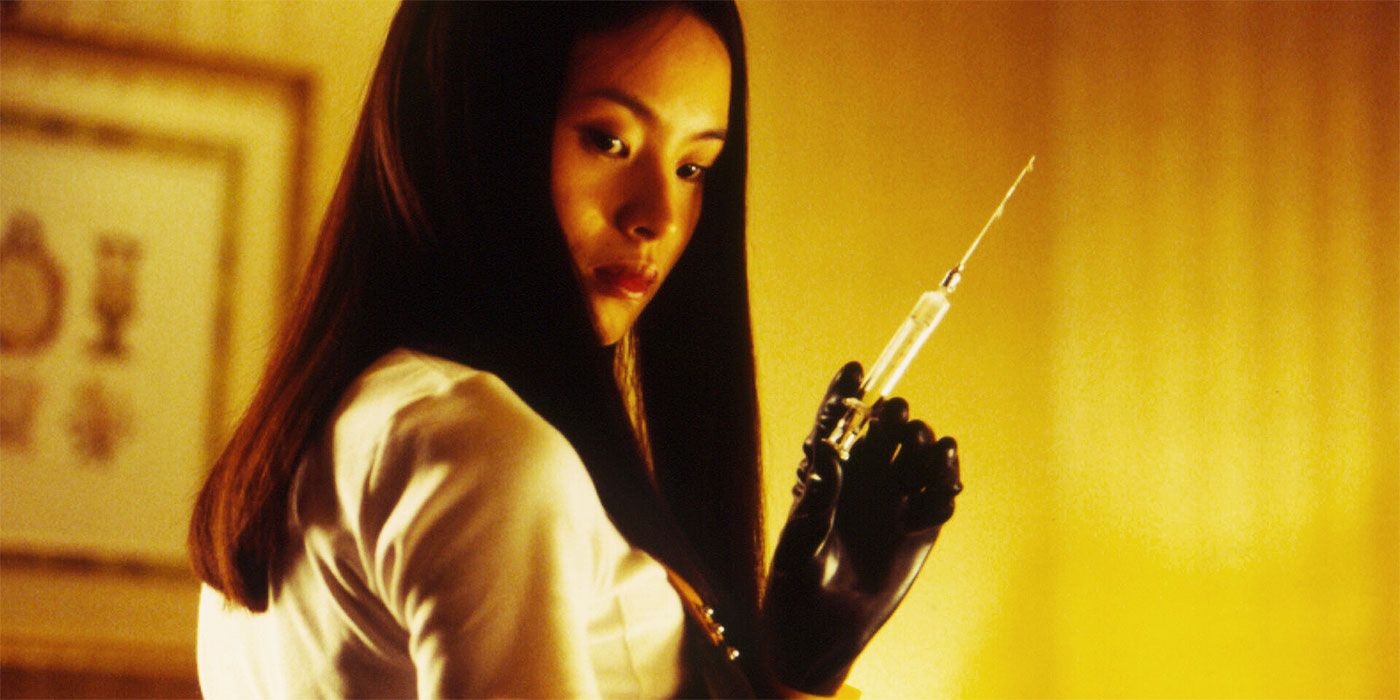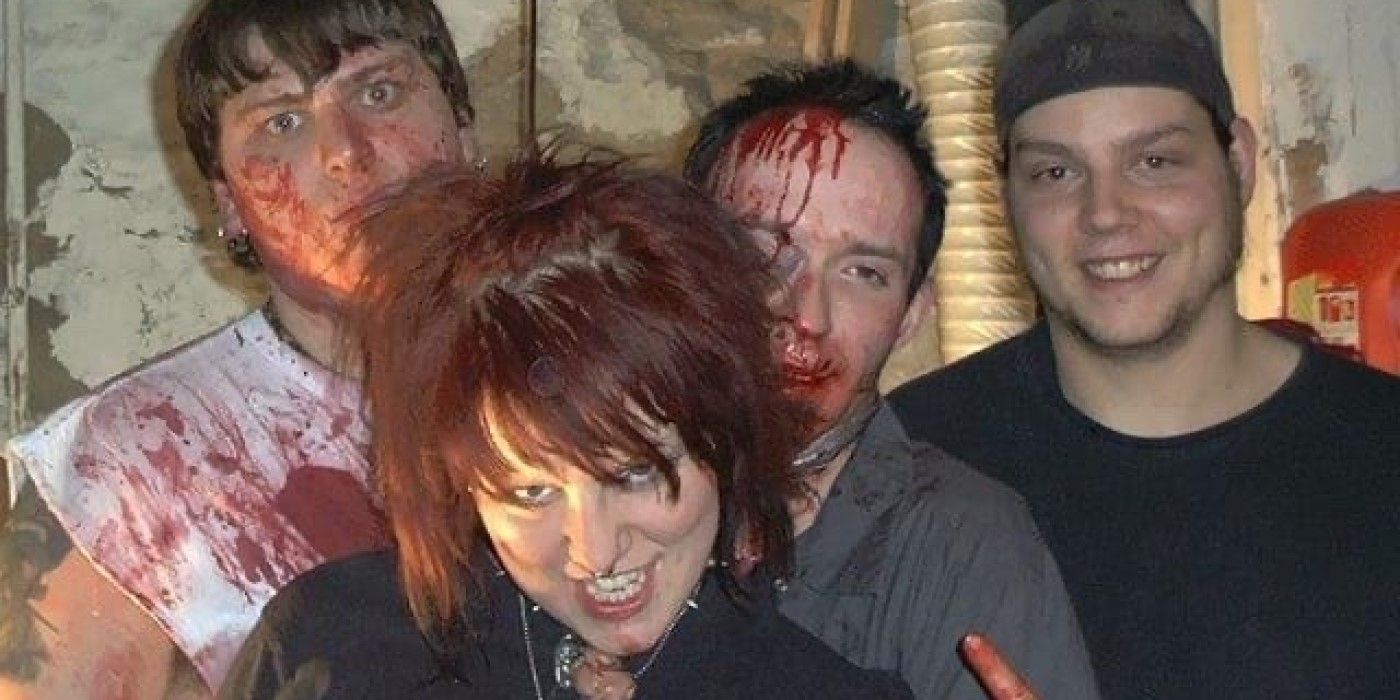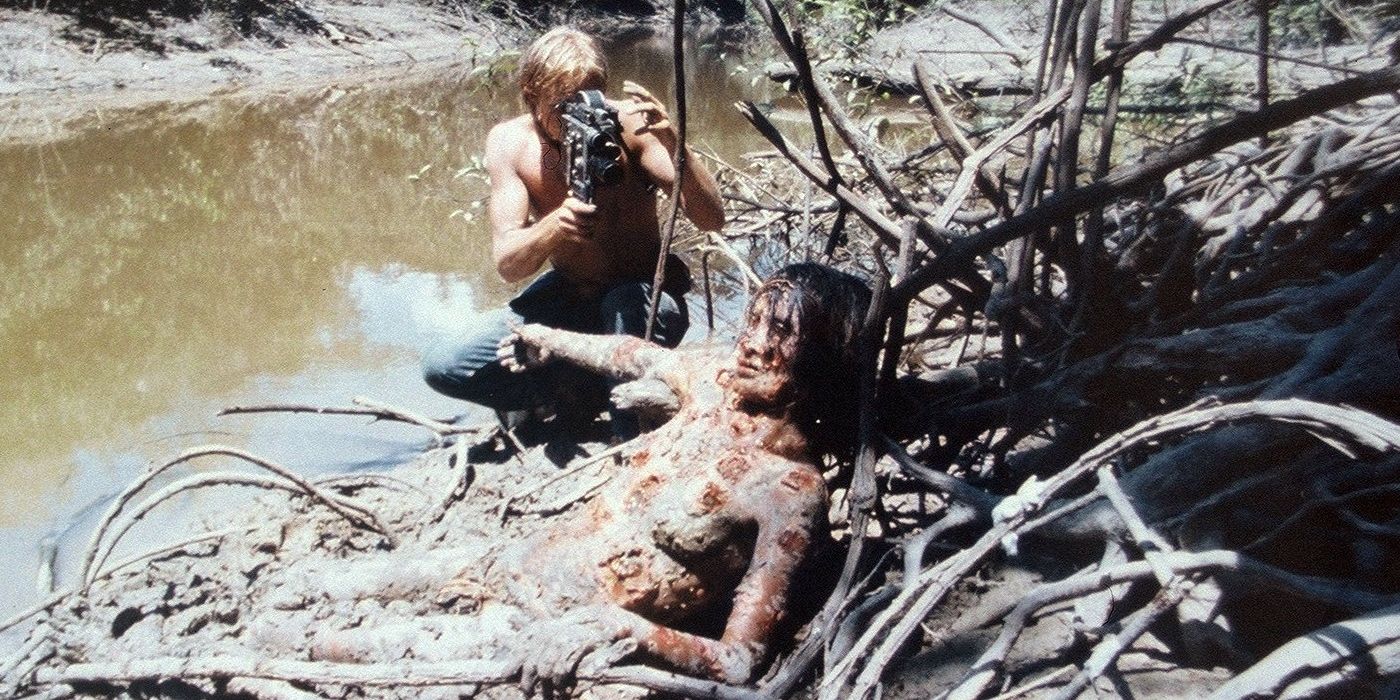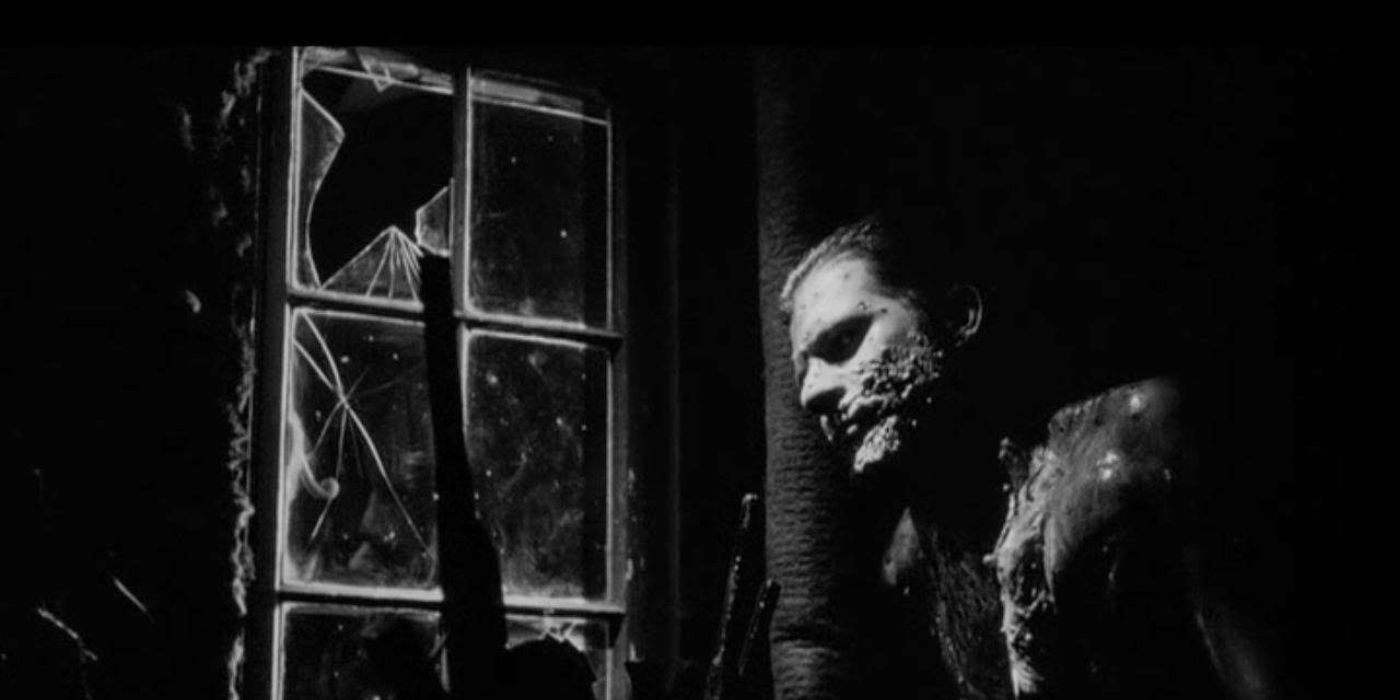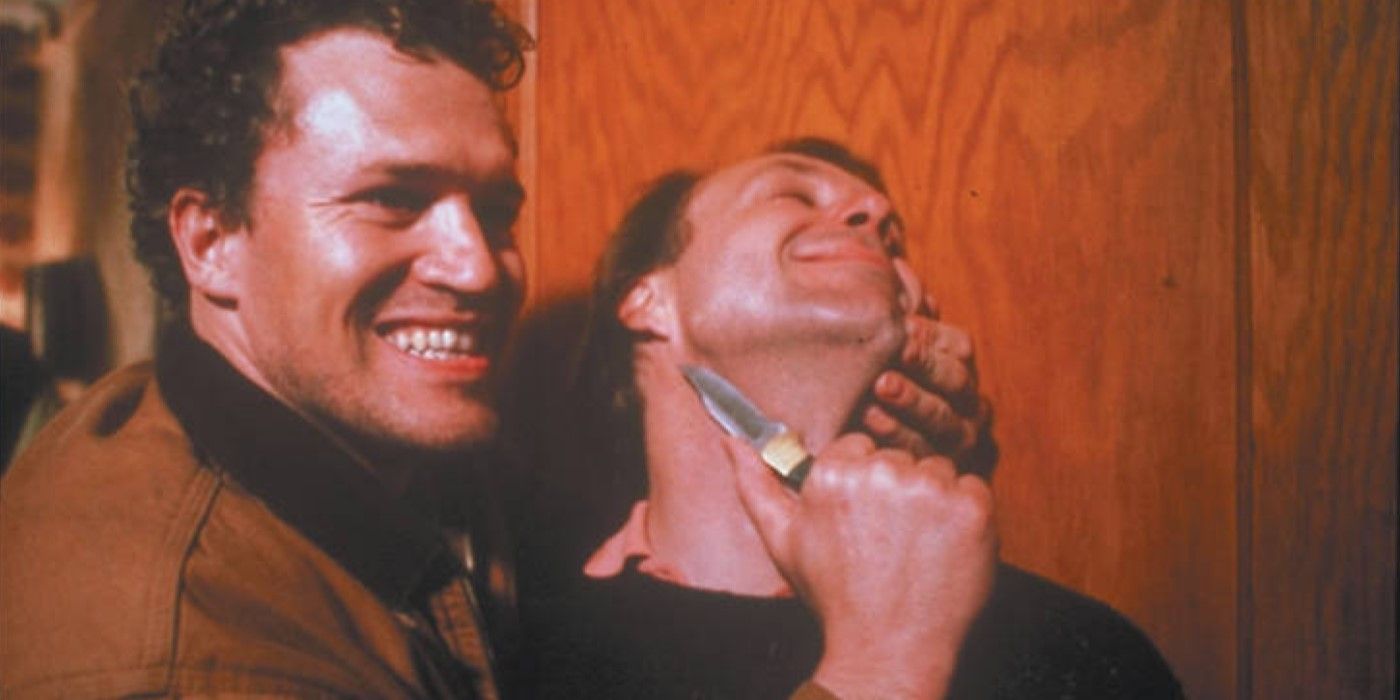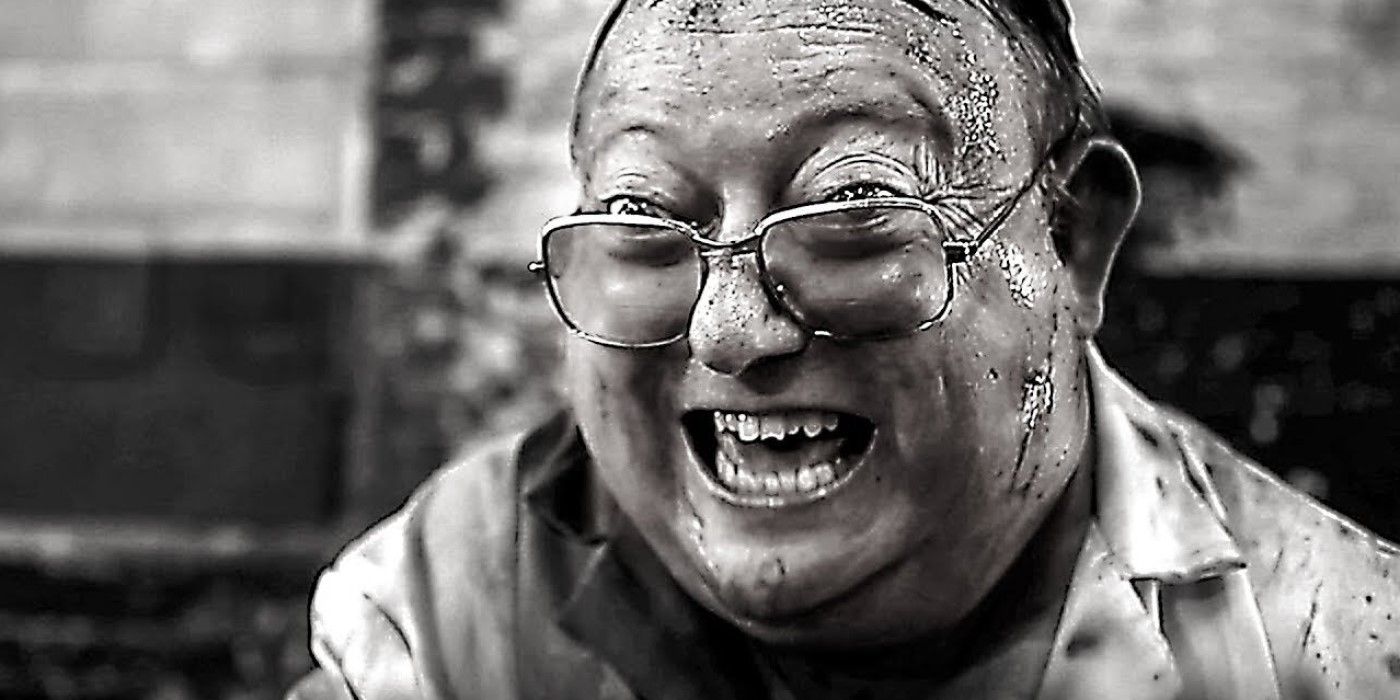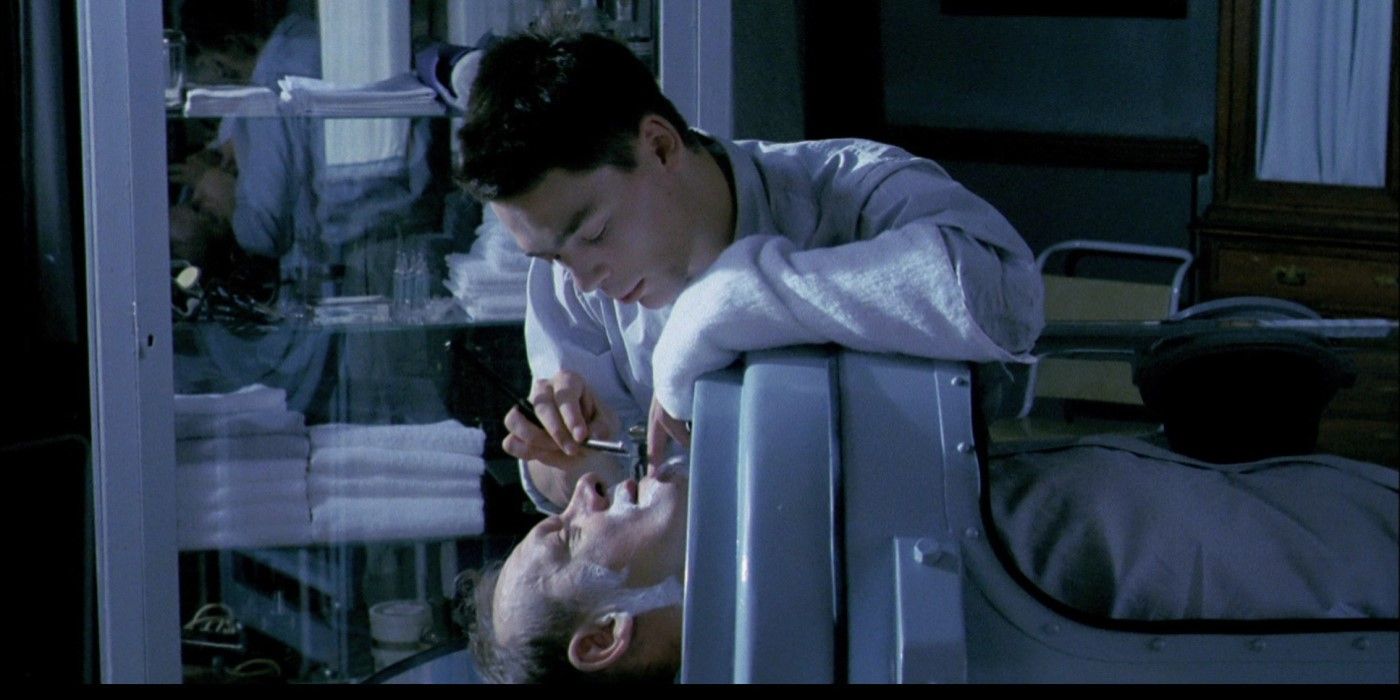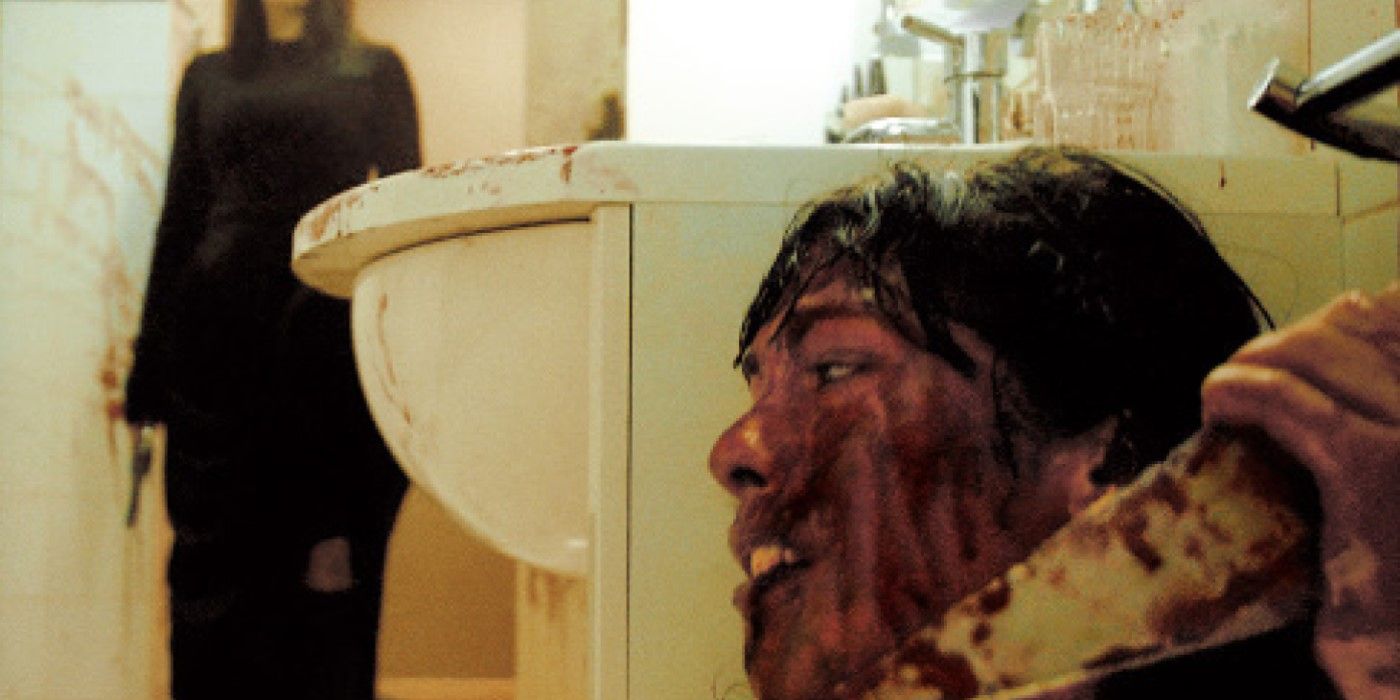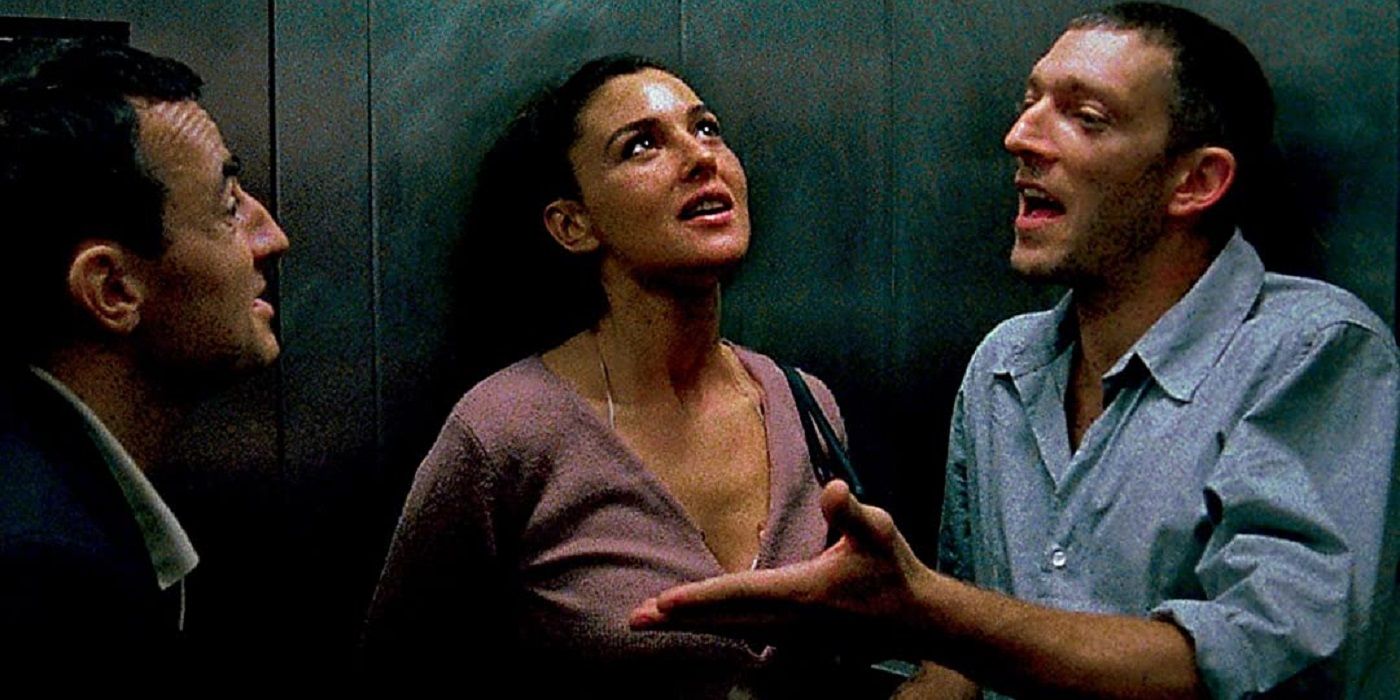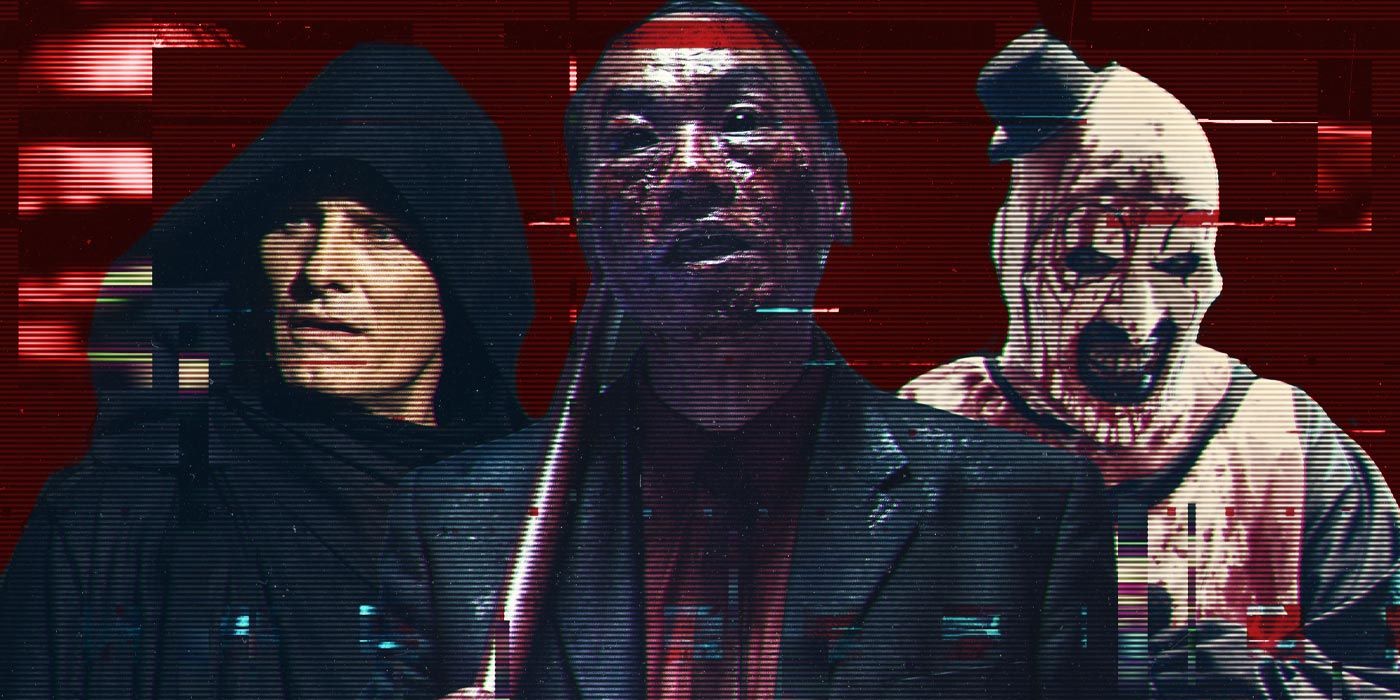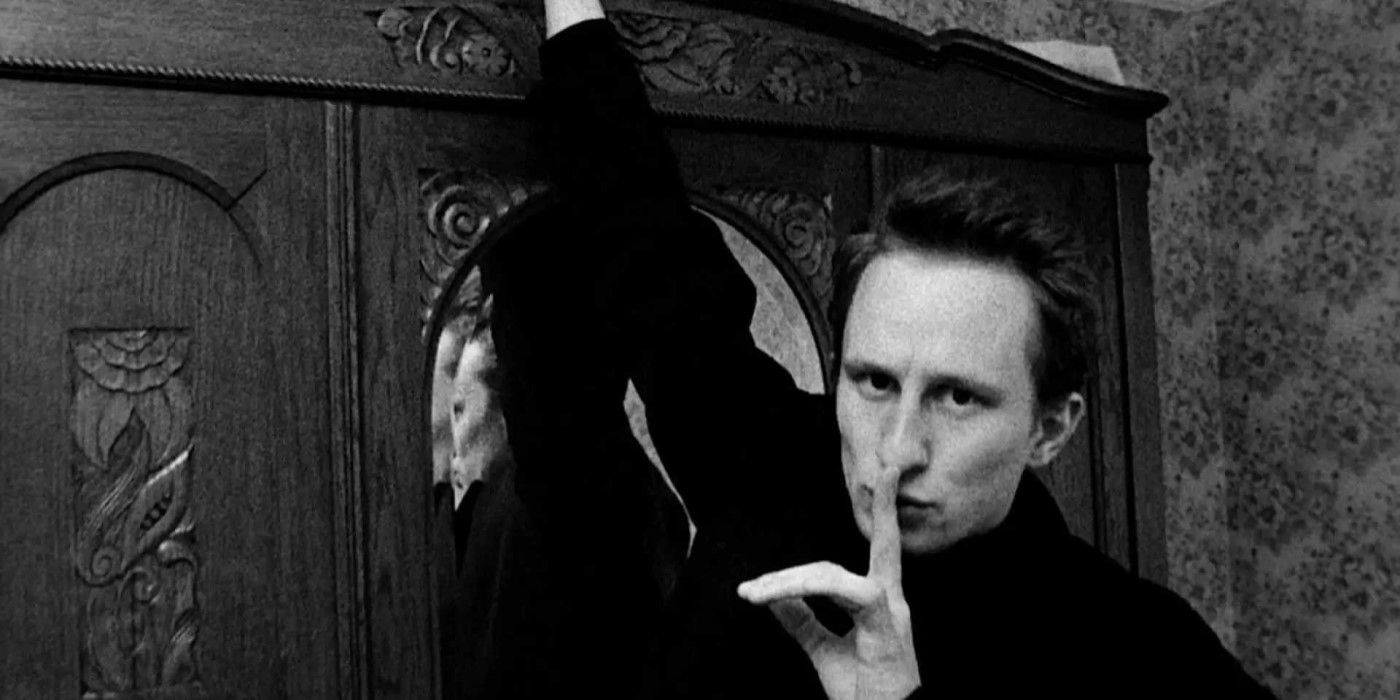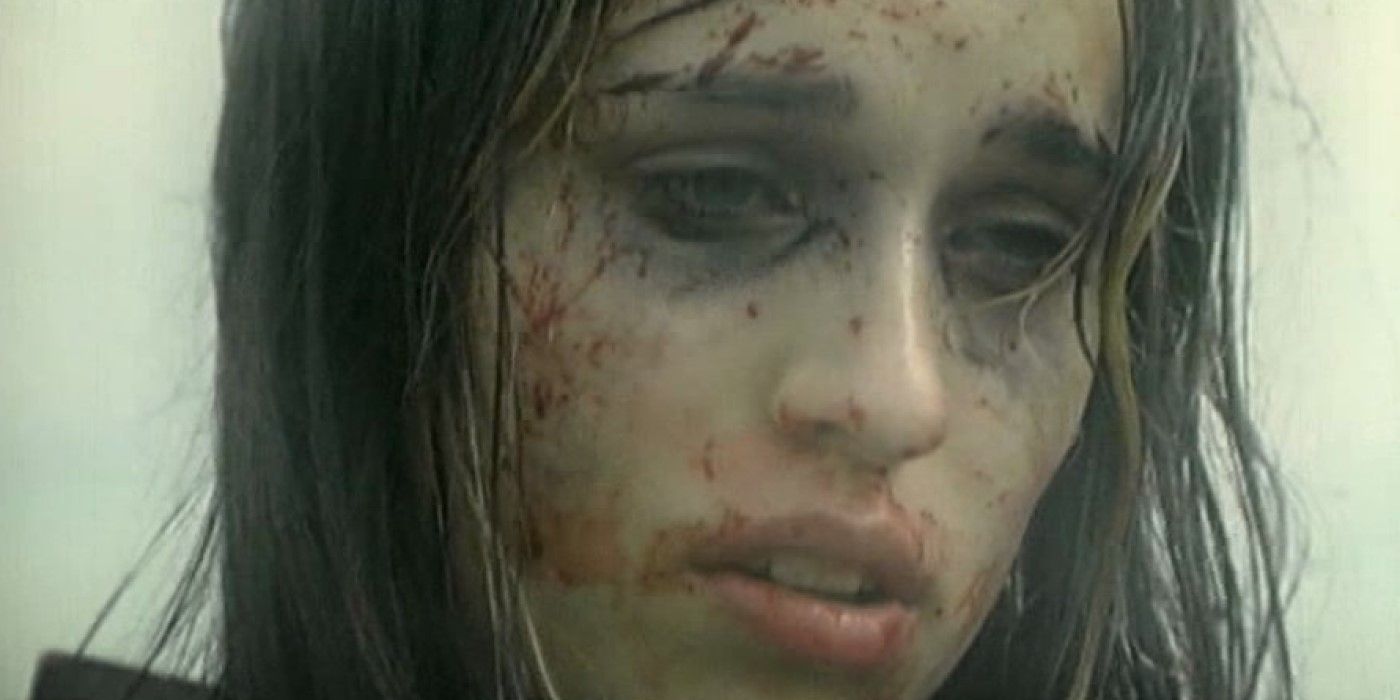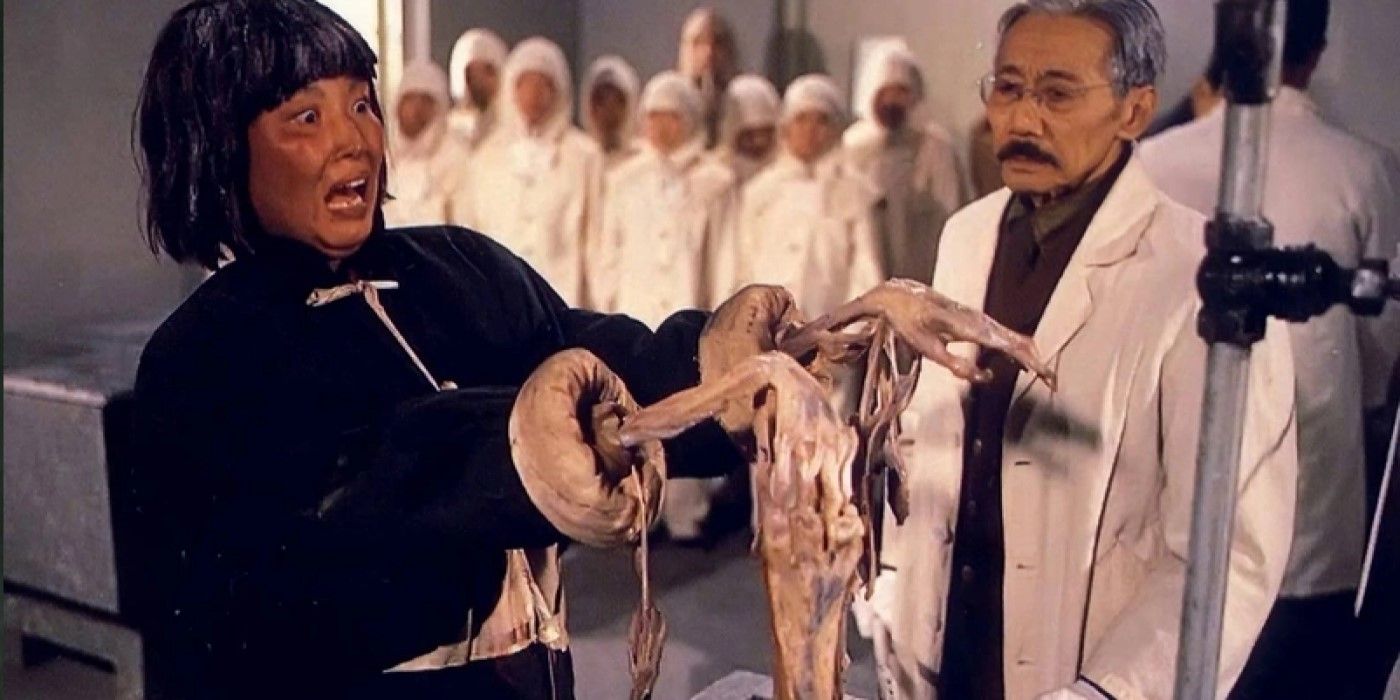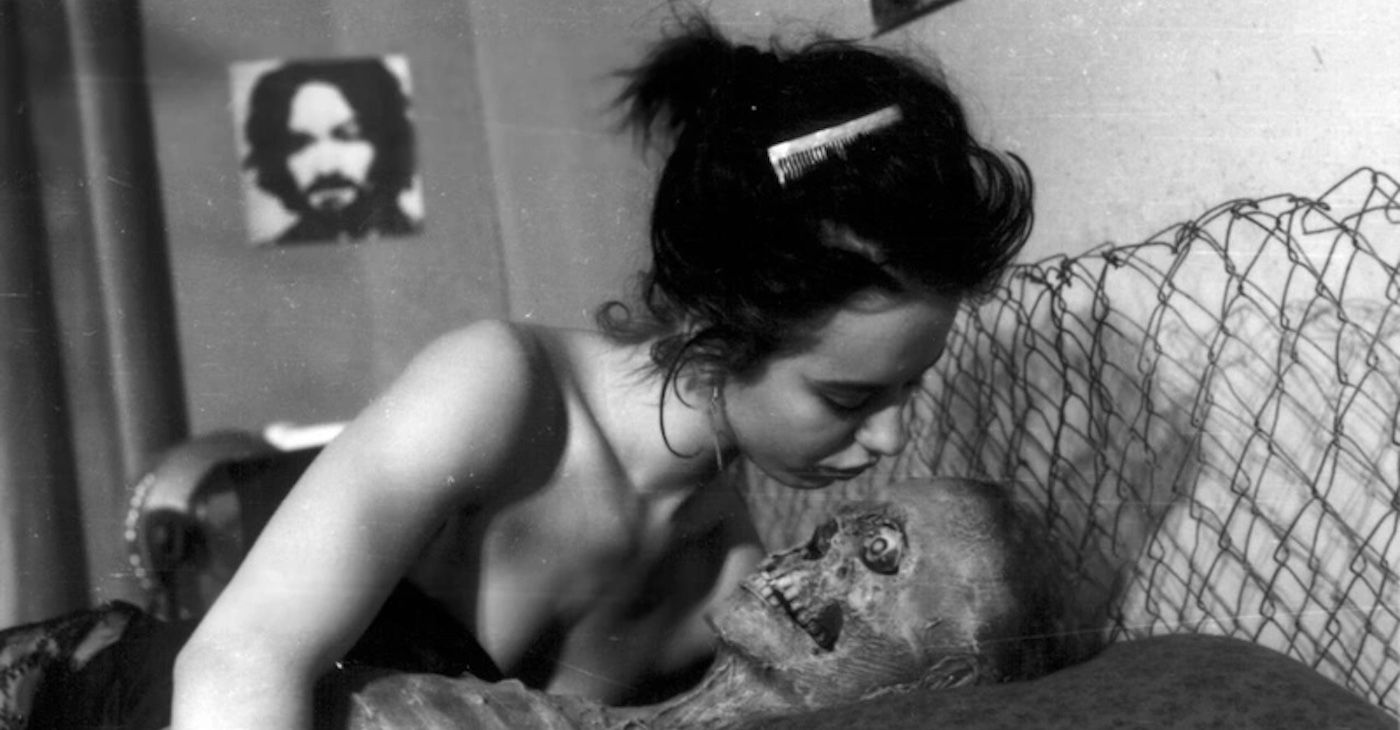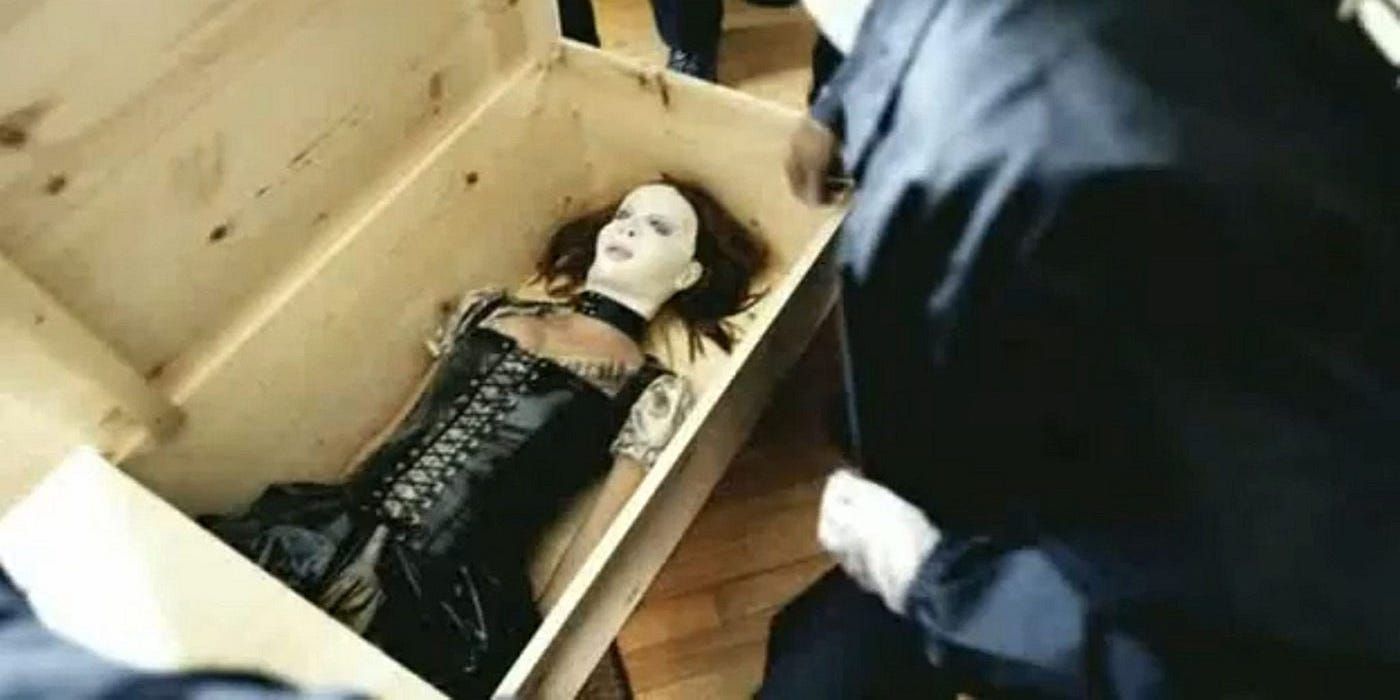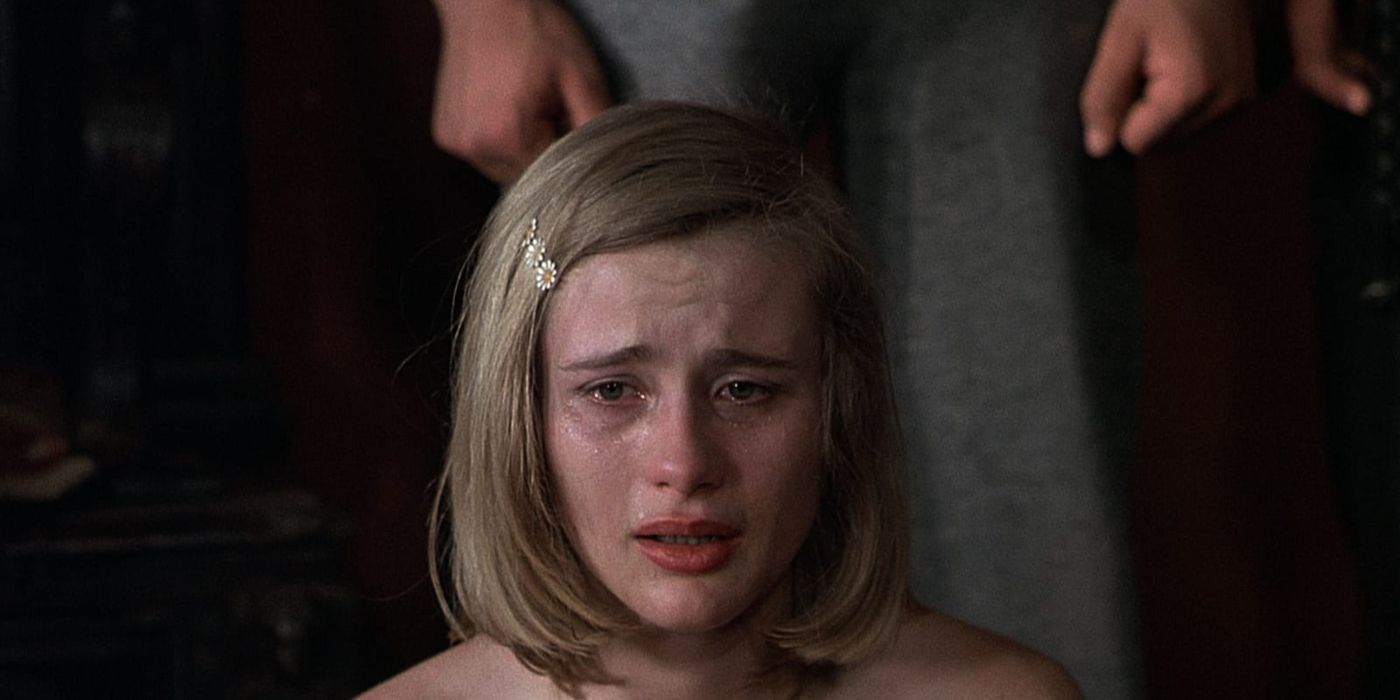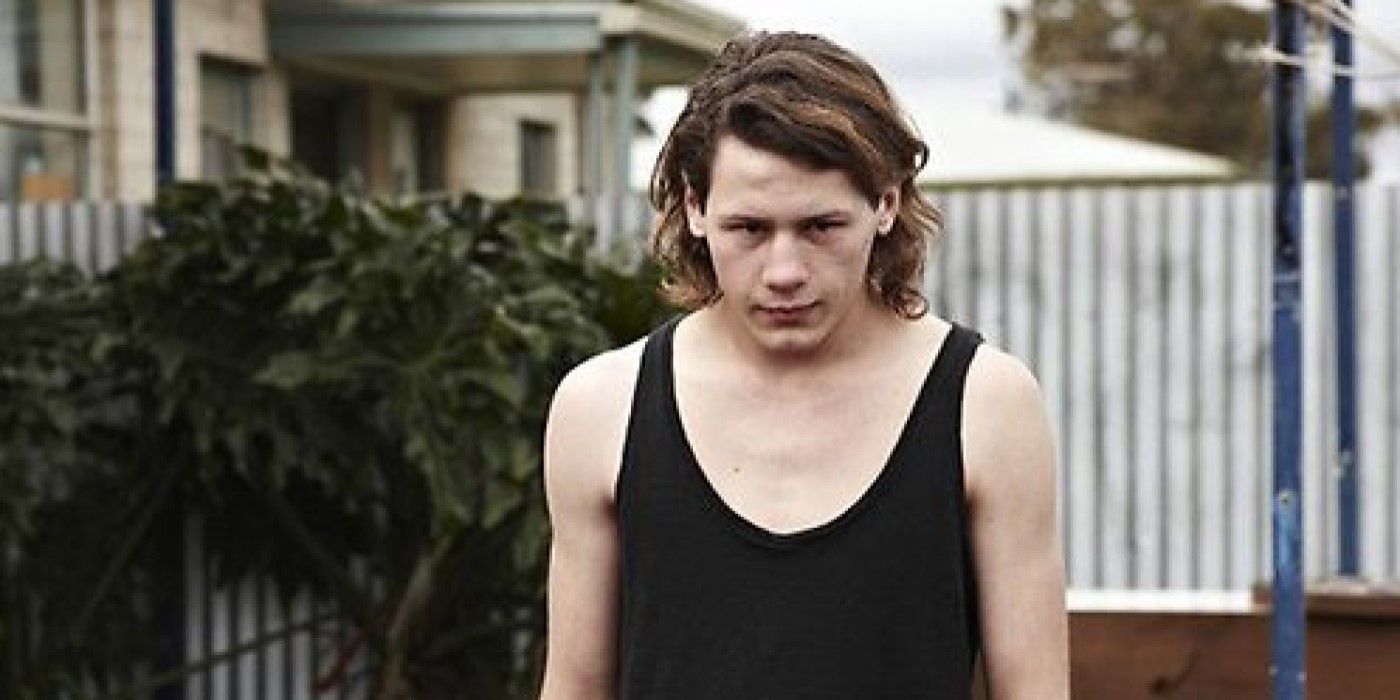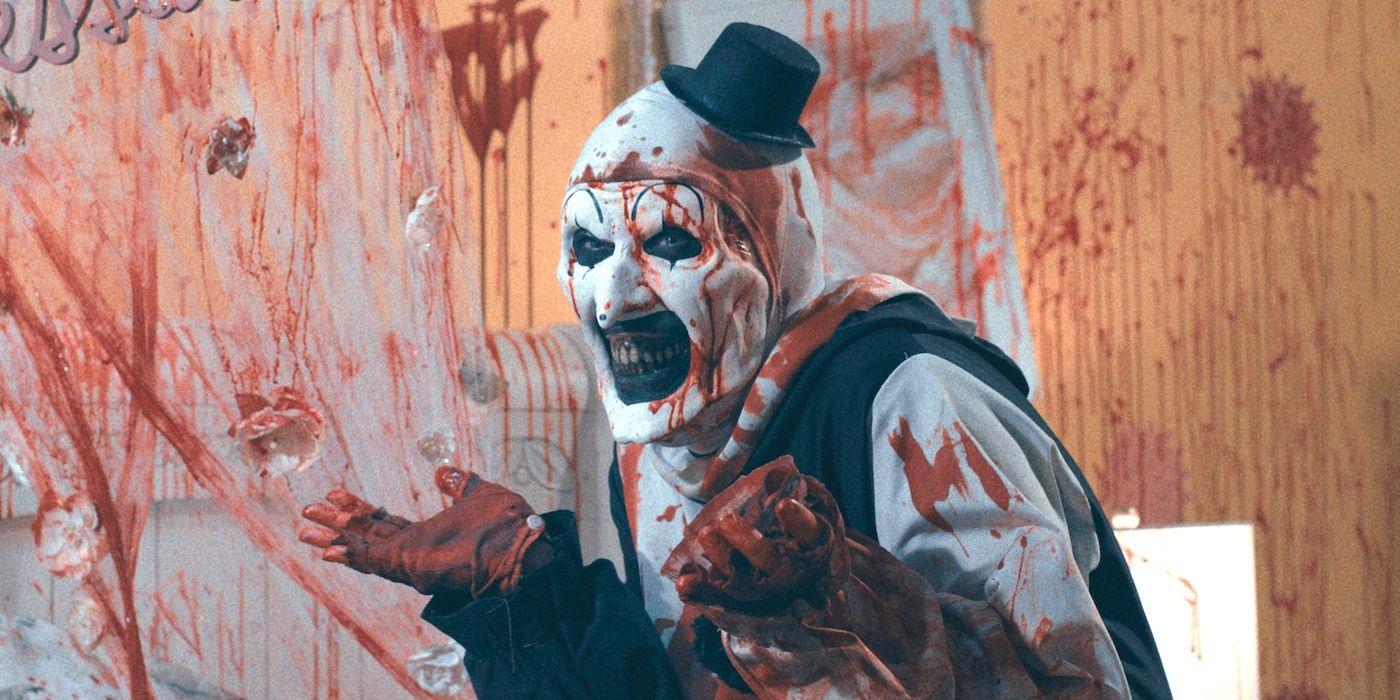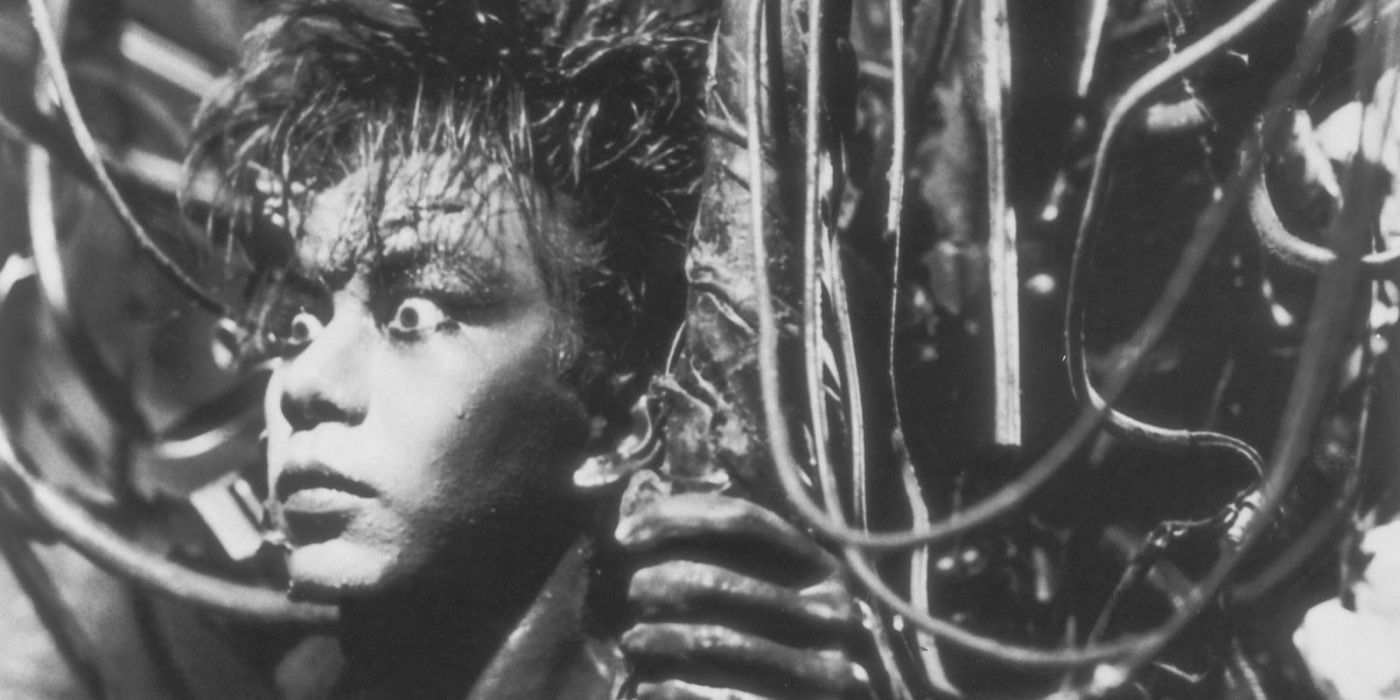Editor's Note: The following piece contains graphic descriptions of horrific, taboo, and potentially triggering imagery and content.We delight in watching acts of violence on screen. From the shenanigans of Looney Tunes cartoons to the Avengers beating the shit out of Thanos in a four-quadrant blockbuster, moviegoers get a kick out of people getting a kick. Perhaps it's an act of vicarious catharsis; perhaps it's because we know it's all fake which gives us "permission" to enjoy it; perhaps it's because the actual stakes, both in and out of the text, seem so low. I am not here to indict folks who enjoy this kind of content — I am one of them. Instead, I'm here to examine what happens when filmmakers turn this dial past the breaking point.
There is a subset of cinema that is interested in exploring the extreme, the profane, the taboo, the disturbing. A brand of movie that brands the viewer, searing their brain with unforgettable imagery and dissection of the most base and perverse human impulses — impulses which just might have something in common with the more "sanitized" form of screen violence we find acceptable (whoops, I guess I am self-indicting a little!). Some of these movies are made merely to shock with empty provocation; some have something genuine to say at their core; all of them will disturb you.
Here, then, are the most disturbing movies of all time, a list of transgressive cinema that will leave you shell-shocked and cowering. Watch at your own risk.
1 A Serbian Film (2010)
Directed by Srđan Spasojević
The bluntness of this film's title should clue you in for the bluntness of its content. A Serbian Film puts the entirety of Serbia in its crosshairs; its director Srđan Spasojević explicitly comments not just on the broader implications of living in a war-torn, fascist-leaning society and government, but on the specific hypocrisies of this same government funding bourgeois, "safe" films that seek to whitewash their own atrocities. To make this point, Spasojević and co-writer Aleksandar Radivojević have crafted a plot that takes us past the point of the underworld.
Retired porn star Miloš (Srđan Todorović) is having trouble taking care of his family. So, despite his better instincts, he agrees to star in an artsy porn film by a provocative auteur (Sergej Trifunović). However, the director's methods and subjects involve tranquilizing Miloš into a state of catatonia and forcing him to do unspeakable things on camera. And when I say "unspeakable," I am not being hyperbolic. Taboos involving sexual violence, necrophilia, incest, and pedophilia are lensed with unsparing detail, giving the film an instant sense of notoriety on the festival circuit. The final shot and decision made are purely evil.
2 Antichrist (2009)
Deep, intellectual art-house flick, or a sick, depraved entry in the "torture porn" horror genre? Director Lars von Trier's Antichrist makes for strong arguments to be made on either side, making it, arguably, the most divisive film on this list. In a nutshell, the film follows "He" (Willem Dafoe) and "She" (Charlotte Gainsbourg) who retreat to their cabin, "Eden," in the woods after the tragic death of their young son in an effort to confront their grief. On the one side, Antichrist is a stark and visceral exploration of loss, a deeply symbolic interpretation of Original Sin, and the battle of rationality versus the mysterious unknown. On the other side, there's a doe with a stillborn fawn halfway out of her, a talking, self-disemboweling red fox, violent intercourse at the base of a dead tree with corpses in its roots, a block of wood smashed into a groin, a handjob with a bloody "happy ending," and, in its most infamous scene, a clitoris that gets cut off. Be dared by the graphic scenes of sex and violence, stay for the cerebral. — Lloyd Farley

Antichrist
A grieving couple retreat to their cabin in the woods, hoping to repair their broken hearts and troubled marriage, but nature takes its course and things go from bad to worse.
- Release Date
- May 20, 2009
- Director
- Lars von Trier
- Cast
- Willem Dafoe , Charlotte Gainsbourg , Storm Acheche Sahlstrøm
- Runtime
- 108
- Main Genre
- Drama
3 Audition (1999)
Takashi Miike is a beyond-prolific director, whose most notorious films, like Ichi the Killer and Visitor Q, regularly soak the viewer in imaginative viscera and psychologically punishing taboos. Why does Audition make the cut over his many other films? In part, because of its borderline-cruel bait-and-switch. Audition starts with a premise and tone of a light romantic drama — Shigeharu Aoyama (Ryo Ishibashi) is a lonely widower who's looking for a new love. Under the advice of his film producer friend (Jun Kunimura), Aoyama starts literally "auditioning" women to potentially be his love, and immediately falls for Asami Yamazaki (Eihi Shiina). The two pledge deep, melancholy feelings of love for each other. And then... shit gets weird. Miike's switch-flip smacks you in the face, forcing you to confront the inherently problematic premise of the film and the inherent sexism baked into dating, romantic pursuits, and even the film industry. When Asami Yamazaki finally starts acting with her own agency... hoo boy, look out. Images of needle-based torture, dismemberment, and eating a bodily fluid that definitely should not be eaten collide with intense psychosexual obsession in a way that sledgehammers the viewer into submission. Which is, precisely, Yamazaki and Miike's goal.
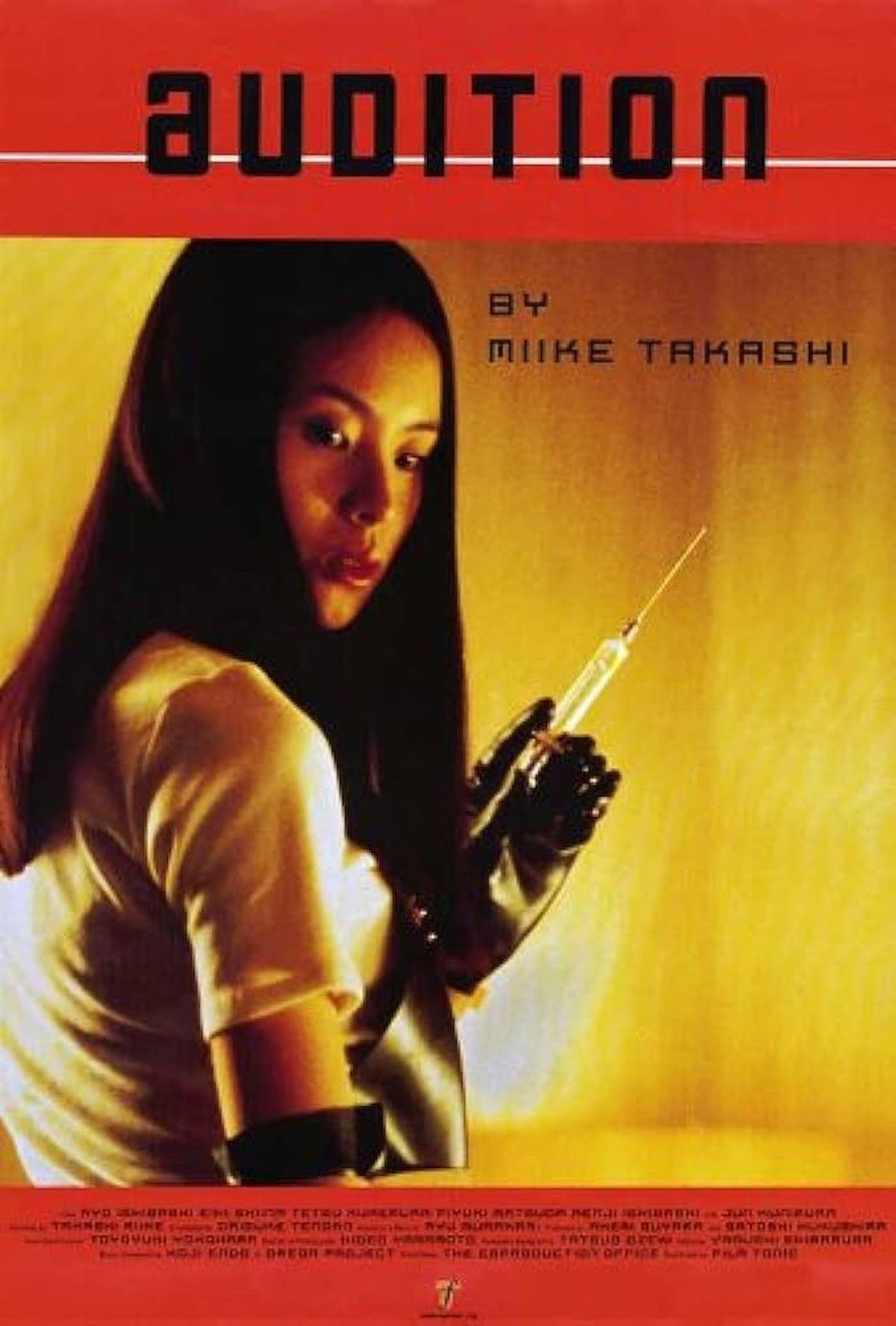
Audition
A widower takes an offer to screen girls at a special audition, arranged for him by a friend to find him a new wife. The one he fancies is not who she appears to be after all.
- Release Date
- October 6, 1999
- Director
- Takashi Miike
- Cast
- Ryo Ishibashi , Eihi Shiina , Tetsu Sawaki , Jun Kunimura , Renji Ishibashi , Miyuki Matsuda
- Runtime
- 115
- Main Genre
- Horror
4 August Underground's Mordum (2003)
Fred Vogel's Toetag Pictures is an independent horror film production company and studio known for low-budget, boundary-pushing works of extreme cinema. Their defining statement comes in the form of a brutal, aggressively nihilistic, found-footage trilogy of mayhem known as August Underground. All three films involve a found family of serial killers traveling around and shooting footage of each other instilling miserable forms of torture and death on their hapless victims. All three films are shot in jagged, lo-fi quality, resulting in an aesthetic that feels as close to a literal snuff film as anyone has produced in a narrative feature film. All three films feature stomach-churning realistic effects, and committed actors willing to do wild, wild shit to each other. But the second chapter, August Underground's Mordum, might be the most abjectly disturbing of the lot. Bodies are nothing more than anonymous opportunities for morbid dissections and corruption, and the Toetag team is more than willing to shove it all in our faces, with each scene managing to top the previous one in its horrific cruelty. Is there a point beyond the chaos of the content on its face value? That's a question I'm not sure Toetag is interested in asking.
5 Cannibal Holocaust (1980)
A notorious 1980 horror film that is a foundational text in the found footage genre was straight up banned in several countries, resulted in the director Ruggero Deodato getting arrested and having to prove in court the special effects were faked, helped kickstart a wave of cannibal exploitation cinema, and influenced filmmakers in its wake (perhaps most explicitly Eli Roth with The Green Inferno). Cannibal Holocaust tells, in mockumentary form, the story of a group of anthropologists who travel to an Amazonian village to try and rescue a group of filmmakers left there.
When they arrive, they discover reels of footage with horrific actions perpetrated by the cannibalistic natives, resulting in a knotted, metatextual narrative that pokes aggressively at white saviorism, colonialism, the role of sensational television news in exacerbating violence, and even the role of the audience member watching this very film. Now, is Cannibal Holocaust only interested in making these points with unimpeachable intellectual acumen? Certainly not. The images shown, in unsparing detail, are clearly designed to court controversy, and in some sequences of actual animal cruelty, may walk a line into purposeless text for some. But there's no denying Cannibal Holocaust has a lot on its mind, and it's willing to eat some brains to try and make its many points.
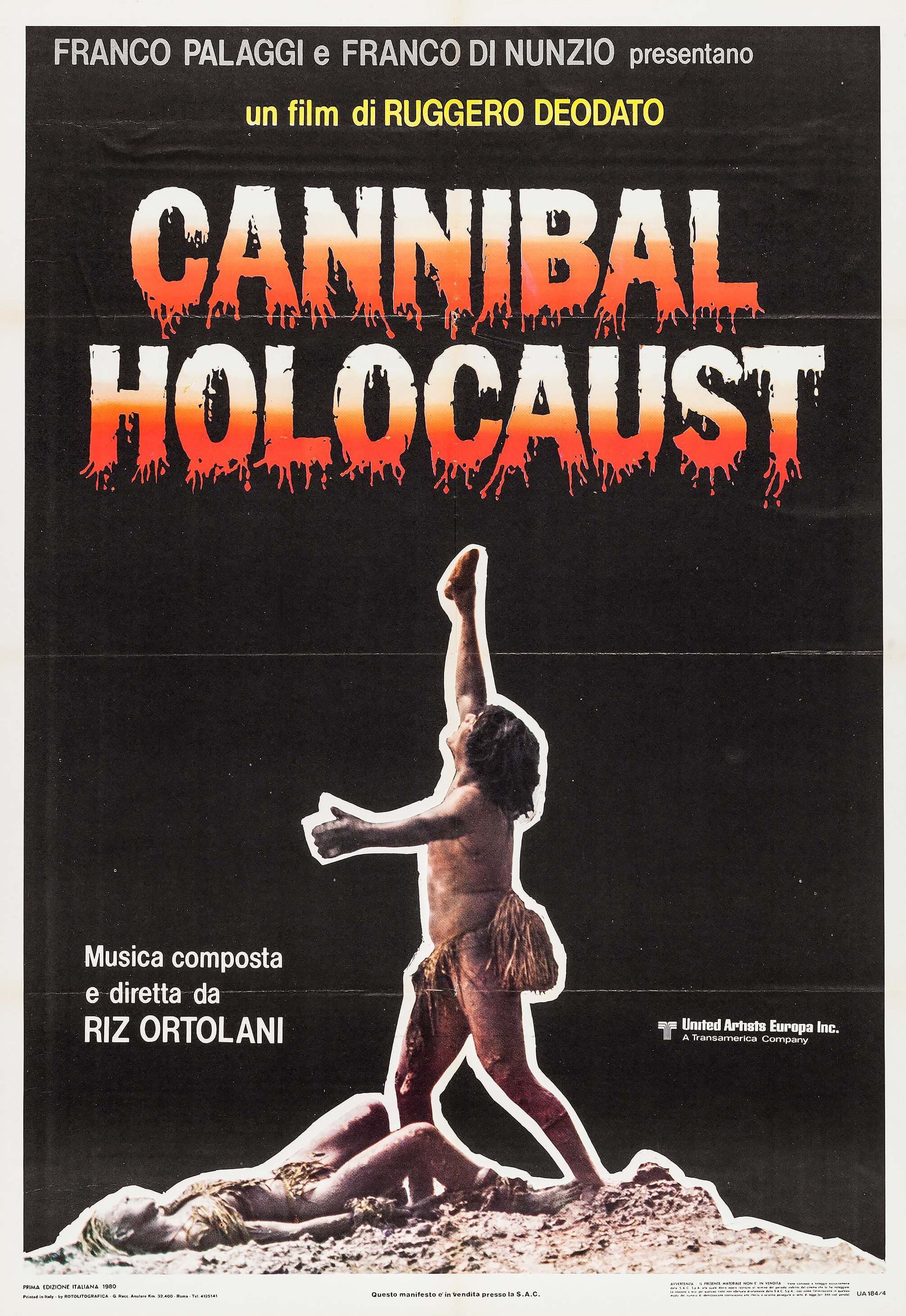
Cannibal Holocaust
During a rescue mission into the Amazon rainforest, a professor stumbles across lost film shot by a missing documentary crew.
- Release Date
- June 21, 1985
- Director
- Ruggero Deodato
- Cast
- Robert Kerman , Francesca Ciardi , Perry Pirkanen , Luca Barbareschi
- Runtime
- 95 minutes
- Main Genre
- Horror
6 Eraserhead (1977)
The debut feature of notorious nightmare-stirrer/meteorologist David Lynch, Eraserhead is likely the closest I've ever felt to living in the casual, gnawing surrealism of a real-life nightmare in cinematic form. Using stark black and white photography and inexplicably terrifying sound design, Lynch tells the story of Henry Spencer (Jack Nance), a feeble and sensitive man who lives in a bizarre, post-industrialized apocalyptic society. His life is turned upside down by the presence (or threat) of domesticity, child-rearing, sexual intercourse, and even the afterlife. Lynch presents these challenges both with a searingly skin-crawling style and no style at all; while the production design of this film is peerless in its atmosphere, so many of the film's haunting images occur almost inadvertently, with no comment on its bleak oddness. All of this culminates in the revelation of a child whose visage remains controversial for the methods in which Lynch may have made it. Somehow, Eraserhead makes speakable the things in our subconscious we can't speak, by barely speaking at all. Sing it with me: "In heaven everything is fine..."
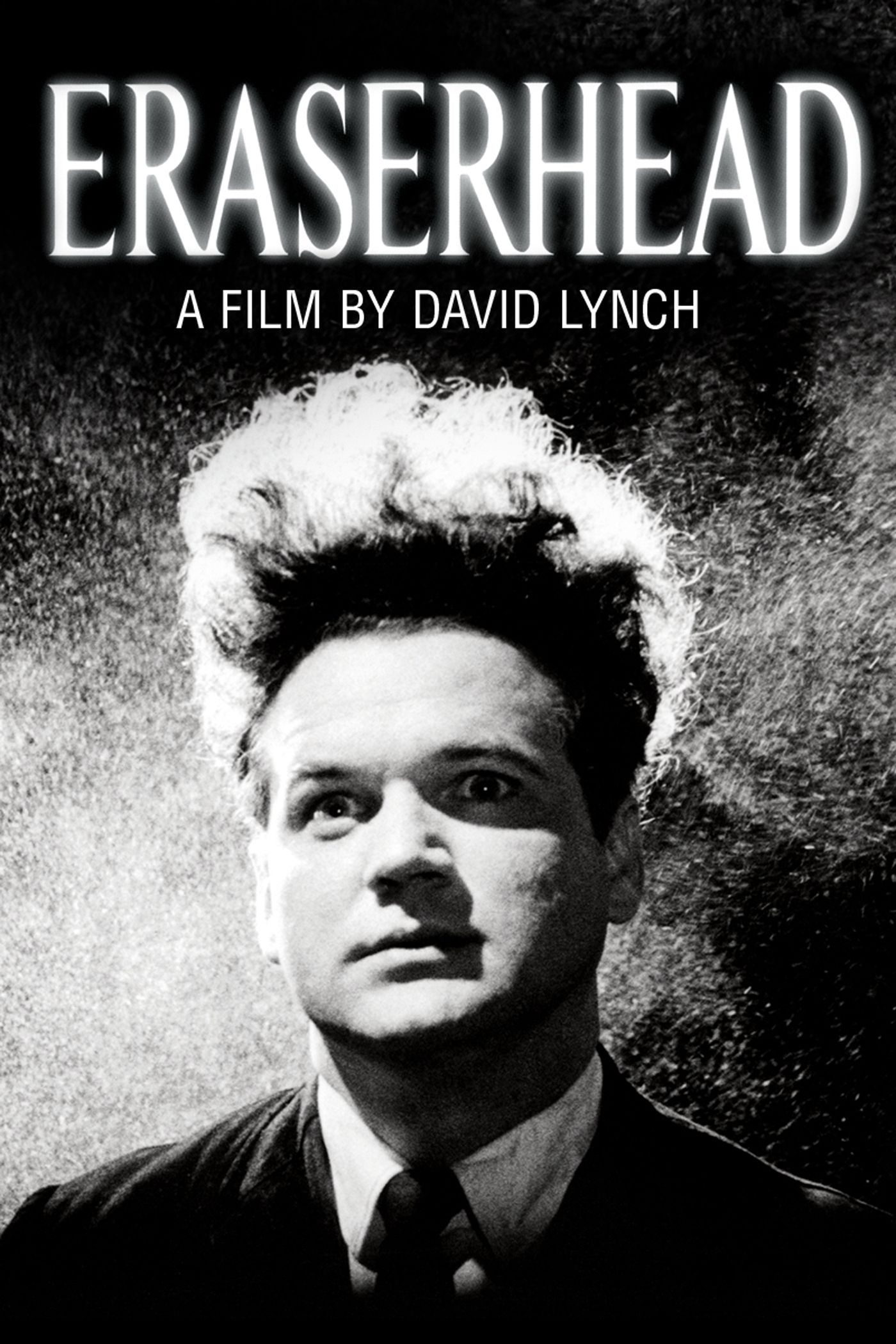
Eraserhead
Henry Spencer tries to survive his industrial environment, his angry girlfriend, and the unbearable screams of his newly born mutant child.
- Release Date
- February 3, 1978
- Director
- David Lynch
- Cast
- Jack Nance , Laurel Near , Charlotte Stewart , Allen Joseph
- Runtime
- 89 minutes
- Main Genre
- Horror
7 Henry: Portrait of a Serial Killer (1986)
If the aforementioned August Underground is the thrash metal of the "found footage serial killer family horror film," Henry: Portrait of a Serial Killer is the quiet jazz improvisation. John McNaughton's low-budget 1986 horror film features a career-making lead performance from Michael Rooker in the title role. Rooker's work here is astonishing, managing to find the crevasses of humanity in a person so wired to inflict nothing but nihilistic, meaningless damage upon those around him, especially those who dare show anything resembling human affection. As for the found footage of it all: Henry is not entirely rendered using in-text cameras.
Many of the film's quieter, more psychologically bruising scenes are shot in simple, stark 16mm coverage, McNaughton's colors feeling atypically deep and luxurious for such a low-budget, horrific affair. But the film's most startlingly brutal moments of murderous carnage — and, importantly, the dread leading up to said outbursts — are filmed within the text by Henry and his crew. The casualness of the carnage, the inevitability of such wanton destruction is what will linger in the mind long after viewing Henry. It's a portrait of a serial killer and a portrait of what can happen if we allow ourselves to be dehumanized and desensitized to a point where empathy is impossible.
8 The Human Centipede 2 (Full Sequence) (2011)
Directed by Tom Six
Tom Six's The Human Centipede, released in 2009, had a raucous premise that instantly became notorious not just among extreme cinephiles, but throughout the general populace. What if you made a "human centipede" by, y'know, attaching people's mouths to other people's butts? I wouldn't blame you if that premise makes you giggle, and the first film's weirdly bright color scheme and the palatable performance from Dieter Laser lean into the accessible, blackly comic nature of it all. But its sequel, The Human Centipede 2 (Full Sequence), takes any sense of accessibility and runs it over with a car, crushing its skull. And yes, that is, unfortunately, a hint at something that happens in the film.
Borrowing a touch of Wes Craven's New Nightmare, Human Centipede 2 centers on Laurence R. Harvey giving one helluva committed performance as a malady-suffering man who is obsessed with —brace yourself — the Tom Six motion picture The Human Centipede. This audacious meta-choice is heightened to its most obvious extreme as Harvey, who's gotten a taste for macabre blood after dispatching with his abusive mother graphically, decides to create his own human centipede out of his own very, very amateurish "medical supplies." Sitting at the top of this centipede?
Brace yourself — Ashlynn Yennie, playing "Ashlynn Yennie, star of The Human Centipede." While there is something undeniably engaging and unexpectedly self-critical with Six folding in his mythology on itself, he mostly uses this as a launching pad for depictions of unspeakable cruelty in sickeningly greasy black-and-white. The aforementioned "skull-crushing" sequence happens to a person you do not want to see it happen to; barbed wire is used in a sexually violent way; and a scene involving the human centipede, um, "eating" is beyond vile. The Human Centipede 2 feels like the film everyone expected part 1 to be, for "better" or for worse.
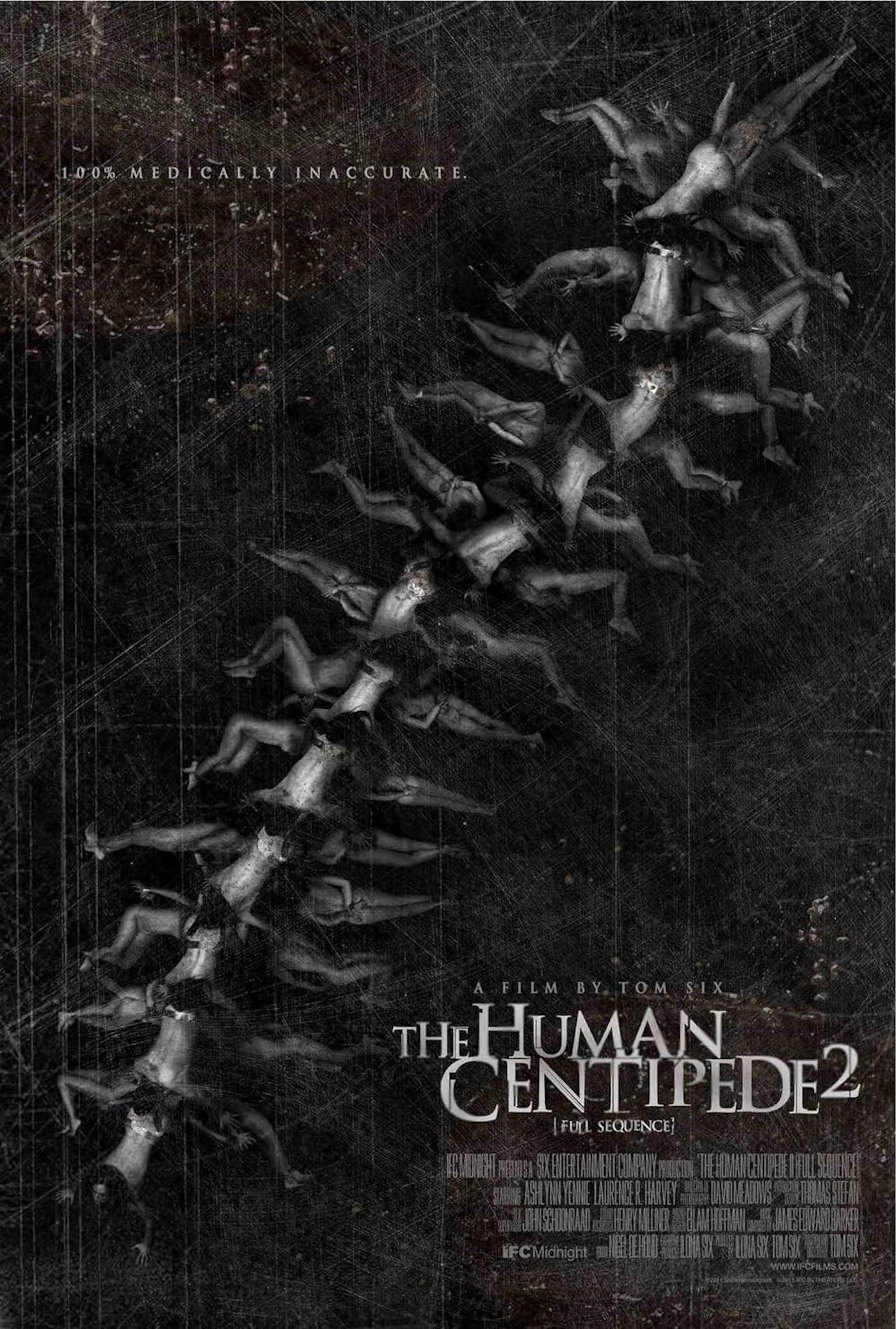
The Human Centipede II (Full Sequence)
Inspired by the fictional Dr. Heiter, disturbed loner Martin dreams of creating a 12-person centipede and sets out to realize his sick fantasy.
- Release Date
- October 6, 2011
- Director
- Tom Six
- Cast
- Laurence R. Harvey , Ashlynn Yennie , Maddi Black , Kandace Caine , Dominic Borrelli , Lucas Hansen
- Runtime
- 88
- Main Genre
- Horror
9 In a Glass Cage (1986)
Directed by Agustí Villaronga
Of all the various subgenres of exploitation cinema, Nazisploitation might be the most eager to break and shove taboos in your face. The ripple effect of psychosexual Nazi-evoking horror shows like Ilsa, She Wolf of the SS, and Gestapo's Last Orgy could be seen in prestige pictures like The Night Porter and in modern works like Rob Zombie's Grindhouse trailer Werewolf Women of the SS and the Amazon program Hunters. In a Glass Cage threads the Nazisploitation needle between "empty shock value" and "something to say" queasily but effectively, using uncommonly atmospheric filmmaking to boot.
The person in the titular glass cage is Klaus (Günter Meisner), a former Nazi doctor who tortured, experimented on and committed horrific acts of sexual violence to children both during the Holocaust and after, where he has exiled himself in Spain. In an episode of his demons catching up to him, Klaus attempts suicide and fails, resulting in his being incubated in an iron lung. A nurse by the name of Angelo (David Sust) offers to take care of him, but he's no ordinary nurse. He is a victim of Klaus', grown up and eager not just to get his revenge on the Nazi doctor, but to inhabit the identity of the Nazi doctor as literally as possible. The resulting narrative is punishing, disquieting, and psychologically fascinating; an effective dissection of the lingering traumas and effects that occur for both abusers and the abused.
10 Inside (2007)
Directed by Julien Maury and Alexandre Bustillo
Of the many violating film experiences produced during the 2000s cinematic movement known as New French Extremity (Martyrs, Trouble Every Day, High Tension, and more, French pieces of cinema that brutally render all things transgressive), none stick to my bones as horrifically as Inside (known in France as À l'intérieur). The plot is beyond simple: Sarah (Alysson Paradis), a recent widow, is pregnant and alone. Then a woman named simply "La Femme" (Béatrice Dalle), invades her home, obsessed with the idea that Sarah's baby belongs to her. And she's gonna get it by any method she can. What results is a viciously nasty, physical, visceral experience of abject brutality and self-defense, swirled up aggressively with psychological provocations of trauma, entitlement, and motherhood — all involving an incredibly pregnant woman. The final moments of this taut, terrifying film make me shudder to this day.
11 Irréversible (2002)
Directed by Gaspar Noé
Speaking of New French Extremity, enfant terrible Gaspar Noé, the auteur behind other disturbing works like I Stand Alone and Climax, put his mark on both that contemporary movement and the more pervasive exploitation subgenre of "rape and revenge" with 2002's disgustingly thorough Irréversible. In traditional exploitation works in that mold, like The Last House on the Left, I Spit on Your Grave, or Thriller – A Cruel Picture, we get to know a female protagonist, are horrified by the vile sexual abuse she goes through, and are vindicated when she gets her violent revenge on her male abusers. Noé, quite literally, flips the script, presenting this narrative in reverse order. The film starts with a free-wheeling cacophony of sound, color, swirling camerawork, and abject carnage, as the piece of "revenge" is instilled on someone we have no context about (notably committed not by a woman re-finding empowerment, but by a rage-filled man).
It's a brutal slice of violence sans context to start a film with — and the very next scene involves an agonizing, nigh-on-unwatchable long take of Monica Bellucci's leading character being raped graphically, before getting beaten into a coma. Again, Noé is presenting us with the typical beats of a rape-and-revenge thriller, but by reversing their order, he is either forcing us to examine the arbitrary nature of violence and emptiness of revenge or being a fuckin' asshole who made a worthless film, depending on your take. The rest of Irréversible does "mercifully" show moments of love, character development, and humanity regarding Bellucci, but it all has a glum, sickening pallor, a subconscious reminder that acts of evil are indeed irreversible, no matter the reason.
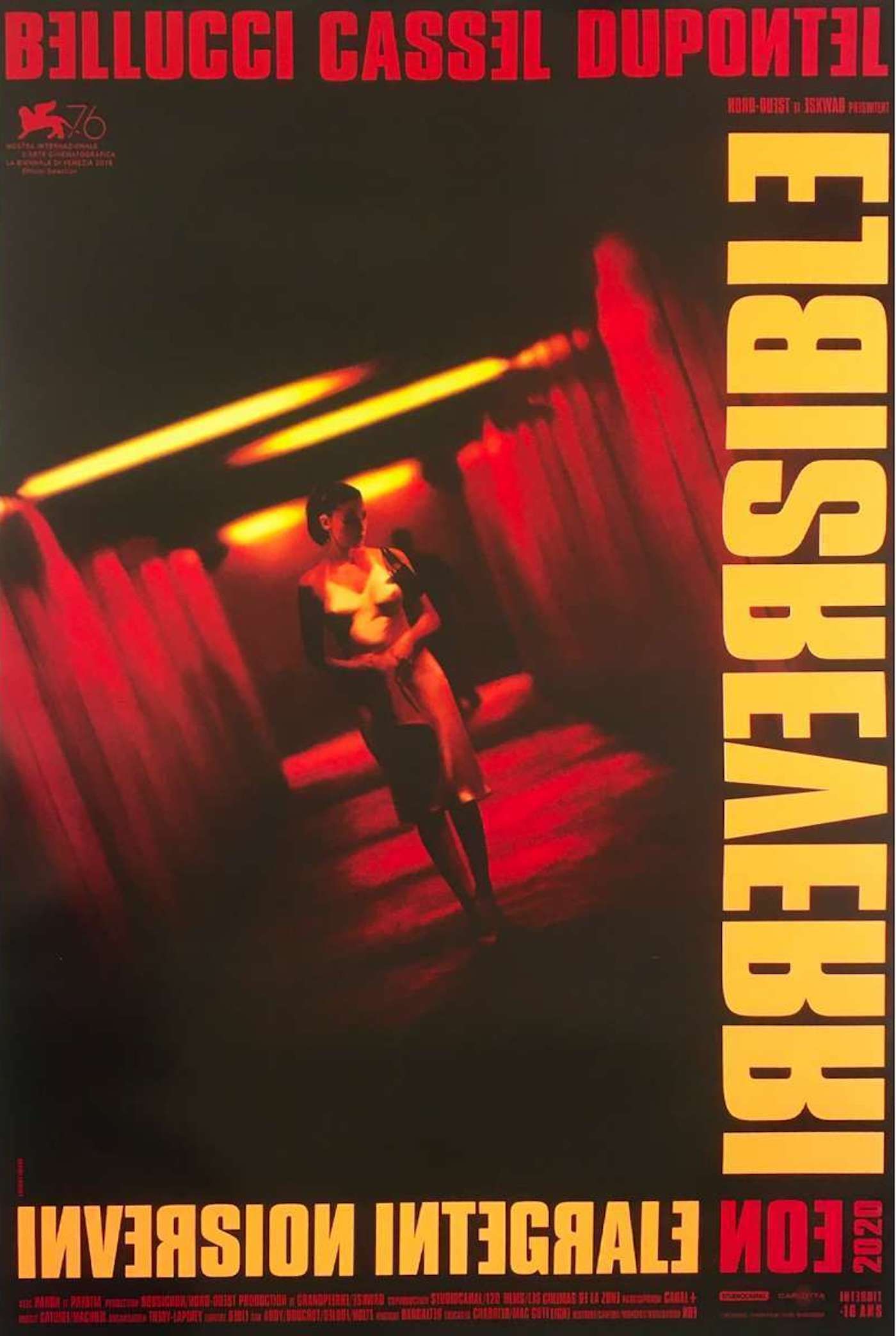
Irreversible
Events over the course of one traumatic night in Paris unfold in reverse-chronological order as the beautiful Alex is brutally raped and beaten by a stranger in an underpass tunnel.
- Release Date
- May 22, 2002
- Director
- Gaspar Noe
- Cast
- Monica Bellucci , Vincent Cassel , Albert Dupontel , Jo Prestia , Philippe Nahon , Stéphane Drouot
- Runtime
- 97
- Main Genre
- Crime
12 Man Bites Dog (1992)
Directed by Rémy Belvaux, André Bonzel, and Benoît Poelvoorde
Of all the many disturbing films I've seen in my lifetime, only one has had the power to make me fast-forward through a scene because of my own personal discomfort. That film is Man Bites Dog, known in its native country of Belgium as C'est arrivé près de chez vous (a take on the phrase "It could happen to you"). From its title on down, the black-and-white mockumentary (another foundational found-footage horror film) has its sights on how we consume and deify acts of violence and their "fun" sense of fear, especially in the news media. A group of journalists follows a man named Ben (Benoît Poelvoorde, disquietingly brilliant). He's charming, funny, and happens to be a prolific, sadistic serial killer. The journalists aim to film him and his increasingly violent crimes with a sense of objective removal. But quietly, sneakily, queasily, the journalists can't help but actively participate in his crimes, indicting not just news media outlets around the world, but even us for wanting to watch and laugh (yes, laugh; the film is often blackly funny) at a movie like this. This all culminates with a midpoint scene of carnage and its aftermath that is shown so casually, so graphically, and so without remorse, that I wish I could fast-forward it in my brain.
13 Melancholie der Engel (2009)
Directed by Marian Dova
Notorious German filmmaker Marian Dova has made numerous works of relentless disgust (do not Google what happens in Carcinoma, for your own good). But in 2009's Melancholie der Engel (The Angel's Melancholia), he just might have made his, um, "masterpiece". At a punishing two-and-a-half hour length, Melancholie der Engel has a lot of philosophical musings on its mind, generally leading to a form of absurd nihilism as practiced by Katze (Carsten Frank), who believes he is nearing the end of his life. Thus, in an effort to push the limits of existence as far as he can before it casually snuffs out, he and a group of, um, "friends" engage in increasingly horrendous, graphic, seemingly unsimulated acts of depravity. These acts of human degradation, filmed in inherently ugly looking digital video, are filtered through all kinds of "big ideas" involving Dova's philosophies and Catholic ideals of guilt and redemption, but it's hard to walk away from this film with any thought other than "why?" Which, I suppose, is the point. If you wished Richard Linklater's Before trilogy had scenes involving shit-eating, Melancholie der Engel might be for you.
14 Men Behind the Sun (1988)
Directed by T. F. Mou
The atrocities of war, rendered in miserable detail. Men Behind the Sun, from Chinese filmmaker T. F. Mou, details the horrific experiments perpetrated on Chinese and Siberian prisoners by imperial Japanese military commanders during World War II with sickeningly grotesque special effects. Beyond the film's obvious visceral disturbances, there are psychological ramifications sledgehammered at as well, both within and outside the text. Men Behind the Sun wants to explore genuine traumas and real-life pain, wants to depict the limits of patriotism and the sliding scale of nationalism, wants to communicate the necessary message that war is, and always will be, hell. But it also wants to be an exploitative horror film with envelope-pushing gore effects. Can it have it both ways? Does it deserve to? If it succeeds, is it still worth our time? Are there other, more palatable ways to digest and process the horrors inflicted on humans by other humans under the guise of war? Or are blunt messages like this really, truly the only way it can stick to our brains?
15 Nekromantik (1987)
Directed by Jörg Buttgereit
Quick guess: What do you think Nekromantik is about, based on its title alone? Ding ding ding, correct! It is truly, sincerely, and unabashedly about shagging a corpse — and director Jörg Buttgereit is truly, sincerely, and unabashedly interested in showing it all. The film follows a couple, Rob and Betty (Daktari Lorenz and Beatrice Manowski), who are eagerly and morbidly interested in the intersections of love, sex, and death. Rob works for a company that cleans up corpses from accident sites, and, well, he likes to keep souvenirs and trophies for him and his girlfriend to play with. Eventually, this heightens into the full-on stealing of a full-on corpse, which heightens into a curious throuple situation involving the ickiest use of a steel pipe I've ever seen in cinema. Nekromantik, for those whose senses of humor are willing to take the plunge, actually mines a decent amount of black comedy from its nearly unprintable premise, playing beats of romantic love and maddening jealousy with wry commitment and outsider appeal. But it doesn't stop the film from mucking in the vilest depictions of human flesh, and its ending moments are both astonishing and oddly poetic.
16 The Poughkeepsie Tapes (2007)
Directed by John Erick Dowdle
If you associate the mockumentary genre with comedic fare like This is Spinal Tap or What We Do in the Shadows, then you may want to fast-forward past The Poughkeepsie Tapes. However, knowing that you're reading this article - and again, no judgment - then you're probably fine with its deeply disturbing serial killer bend of the genre. The film begins with police raiding a house in Poughkeepsie, New York, where they discover 800 videotapes filmed by serial killer Edward Carver (Ben Messmer). The collection is a visual library of the murders he committed, from the point Carver abducts his victim, to the horrific death, and finally to the mutilation of the victim's corpse. Problem is, Carver's no idiot, and never shows up in his films without being disguised, giving law enforcement literally nothing to aid them in finding him.
The "snuff film" sequences are effective, leading viewers to wonder if they truly are fictional, making them that much more unsettling. One shows Carver abducting an eight-year-old girl that he rapes and murders. Another far more disturbing video sees Carver pick up a couple, knocking the woman out with chloroform, performing a Caesarian section on her, putting her husband's severed head inside her womb, then waking her to film her reaction. It leads one to wonder who is sicker: the serial killer of the film, or the minds that crafted scenarios like the one just described for the film. Hey, Poughkeepsie law enforcement, remember to be kind and rewind. — Lloyd Farley
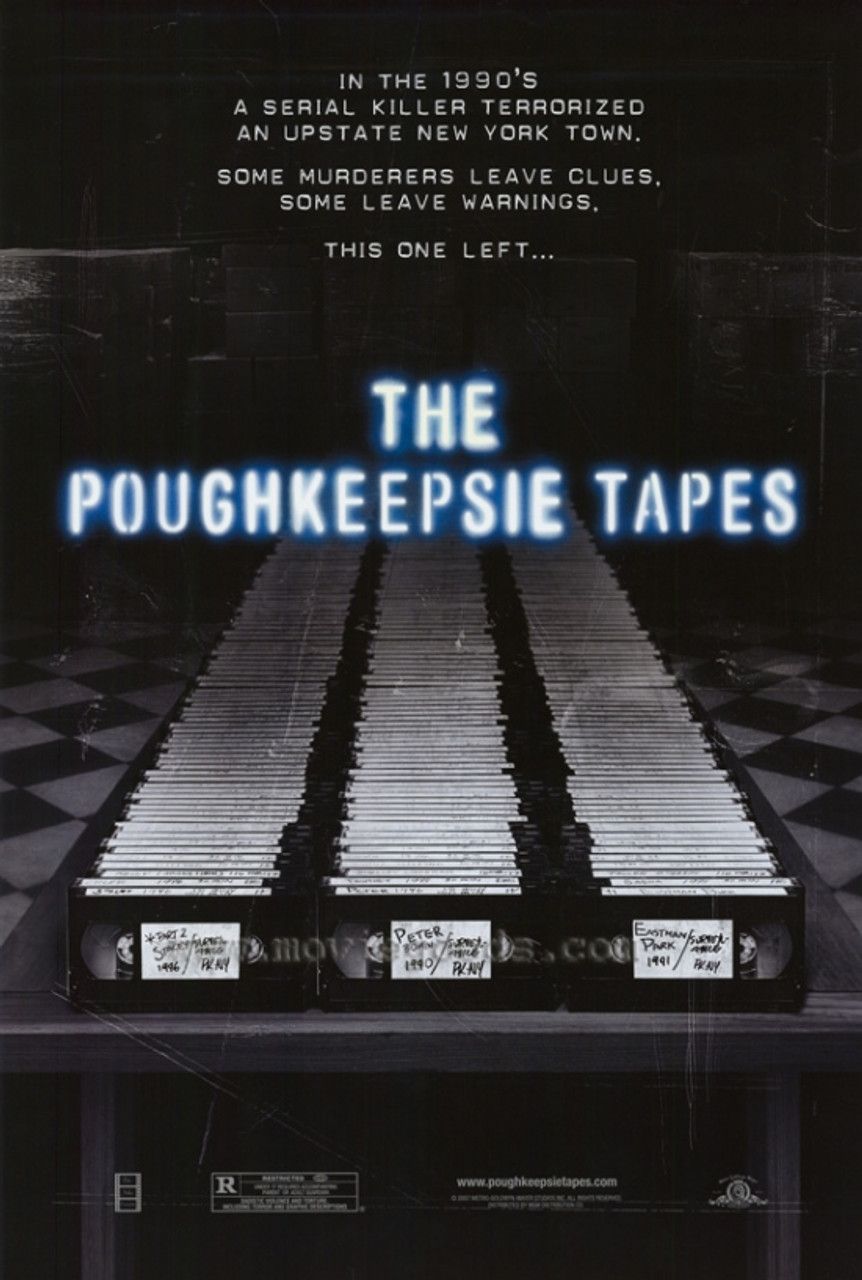
The Poughkeepsie Tapes
In an abandoned house in Poughkeepsie, New York murder investigators uncover hundreds of tapes showing decades of a serial killer's work.
- Release Date
- January 30, 2009
- Director
- John Erick Dowdle
- Cast
- Stacy Chbosky , Ben Messmer , Samantha Robson , Ivar Brogger , Lou George , Amy Lyndon
- Runtime
- 86
- Main Genre
- Horror
17 Salò, or the 120 Days of Sodom (1975)
The granddaddy of disturbing cinema, a shocking piece of horror that has, despite (because of?) its extreme content, earned that rare piece of prestige cinema canonization. That's right, friends: You can buy Salò, or the 120 Days of Sodom in a fancy Criterion Collection Blu-ray package, with its aggressively graphic depictions of corrupt fascism and animal impulse run amok in exacting, infuriating detail. Pier Paolo Pasolini's final film before his murder, Salò is inspired in equal measure by Marquis de Sade's The 120 Days of Sodom, an influential work on the limits and breaking points of human degradation and sexuality (it's where the word "sadism" comes from!), and the real-life horrors inflicted by a fascist Italian government during World War II. Countless young people are tortured, mutilated, forced to perform unspeakable acts against each other, and killed in ways that seem to exist only to satisfy the increasingly lurid whims of their oppressors. Salò is a brutal watch, one that I'm not sure anyone can "recommend," but it is a vital one. It's a film that strips bare the thin edge between humanity and evil under the auspices of hierarchical power structures, a film that shows how deep cruelty can run. It is not ideal to watch while eating.
18 The Snowtown Murders (2011)
Directed by Justin Kurzel
The Snowtown Murders, based on a real-life series of killings in Adelaide, Australia, is an excruciating slow burn, a look under the decrepit microscope of dysfunctional small-town communities, a cross between Harmony Korine and Michael Haneke, a ferocious debut feature for director Justin Kurzel. Determined to rid his community of the explicit threat of pedophiles and homosexuals, which he is more than willing to toxically conflate, John Bunting (a terrifying Daniel Henshall) recruits a group of lower-class folks, including victim of sexual violence Jamie Vlassakis (a heartbreaking Lucas Pittaway), to find, torture, and murder those who deserve it. Kurzel's frame is both unsparing and disturbingly stylish, using both the power of explicit carnage and implicit terror to constantly shove a screwdriver into the viewer's guts. Psychologically, Snowtown never lets anyone off the hook — not the actual pedophiles being murdered, not the viewers who might find that action in some way vindicating, not Jamie falling under the sway of this new tempting figure, and certainly not John Bunting himself. It's grim, grim, grim stuff, a movie that explores the most basic and vile traits of human nature in ways that will make you empathize, and then make you need a shower.
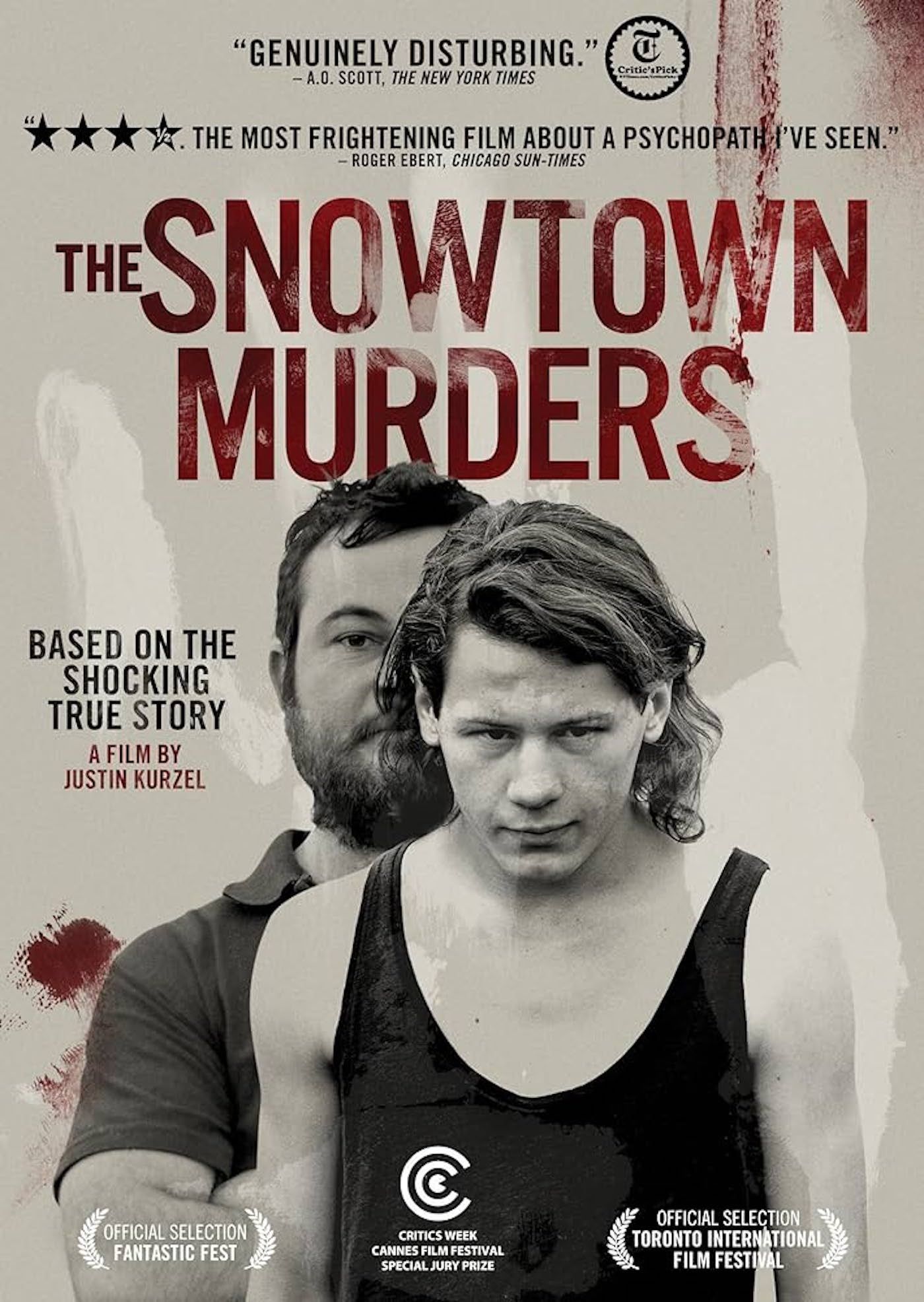
The Snowtown Murders
Based on true events, 16 year-old Jamie falls in with his mother's new boyfriend and his crowd of self-appointed neighborhood watchmen, a relationship that leads to a spree of torture and murder.
- Release Date
- May 16, 2011
- Director
- Justin Kurzel
- Cast
- Lucas Pittaway , Bob Adriaens , Louise Harris , Frank Cwiertniak , Matthew Howard , Marcus Howard
- Runtime
- 119
- Main Genre
- Biography
19 Terrifier 2 (2022)
Directed by Damien Leone
It's the feel of the 80s slasher flicks you love, with the bloody violence and gratuitous gore you need. Terrifier 2 has a storyline, but really, does it matter? Like Jason and Freddy before him, Art the Clown (David Howard Thornton), thought dead after the events of the first film, is resurrected just as a coroner (Cory DuVal) begins investigating his body. Art gets life back, the coroner gets his head smashed in, one eye gouged out, and then the complete bludgeoning of whatever was left of his cranium. The Terrifier films are renowned for their imaginative and darkly comic deaths, with Terrifier 2 among a handful of films that can lay claim to having made audiences hurl. One particularly pitch-black scene shows Art completely mutilating Allie (Casey Hartnett) in excruciating detail, beginning with Art stabbing her in the eye, scalping her, cutting into her back, breaking off an arm, then a hand, pouring bleach and salt into her wounds, and pulling her face clean off. And she's alive for the whole damn thing. If that doesn't disturb you, you'll be happy to know that Terrifier 3, due to an extremely violent opening scene (one that implies the death of a young child who comes down the stairs to see "Santa" - it ain't Santa), has been rejected by Hollywood studios, but will still be released independently. — Lloyd Farley

Terrifier 2
After being resurrected by a sinister entity, Art the Clown returns to Miles County where he targets a teenage girl and her younger brother on Halloween night.
- Release Date
- October 6, 2022
- Director
- Damien Leone
- Cast
- Felissa Rose , David Howard Thornton , Samantha Scaffidi , Griffin Santopietro , Tamara Glynn , Lauren LaVera
- Runtime
- 138
- Main Genre
- Horror
20 Tetsuo: The Iron Man (1989)
Directed by Shinya Tsukamoto
If you find Black Mirror disturbing, you ain't seen anything yet. Tetsuo: The Iron Man is a hard friggin’ watch. It’s an experimental, black and white nightmare in dialogue with similar cult classics like the aforementioned Eraserhead or Begotten. It’s less interested in a palatable sci-fi narrative than it is in an unsparing exploration of mood. And the “mood,” courtesy of notorious Japanese cult filmmaker Shinya Tsukamoto, is “bleak". Tetsuo is technically a cyberpunk film. Cyberpunk fiction is interested in the blending of human beings with cybernetic enhancements. And Tetsuo: The Iron Man takes that impulse and catapults it to its crystallized extremes, stripping away all other parts for the sheer purpose of “man plus metal.” The “man” of this equation, played with hypnotic obsession by the film’s director, views hunks of metal as violent fetish objects that deserve as full of our praise and fusion as possible — his very first action in the film is to cut open his own leg and shove a piece of metal into it. But when a salaryman (the Japanese word for “white-collar worker”) played by Tomorowo Taguchi starts literally sprouting metal as the culmination of his violent dreams and reality-blurring fantasies, the two face off in relentlessly nihilistic fashion.
Tetsuo: The Iron Man is chock-full of upsetting imagery, particularly when the titular Iron Man and his fully human girlfriend (Kei Fujiwara) attempt to copulate even though he’s, y’know, an Iron Man. But it’s not shock for shock’s sake — Tsukamoto has a lot on his mind, and every facet of his fever dream, from the grimly handmade makeup effects to the smeary 16mm camera, speaks in service of his ultimate thesis statement: The fusion of technology and the human race will totally destroy us all.


